Design and Creative Leadership
Student projects
Dive into the future of innovation with the Design and Creative Leadership master's degree program, which starts in fall 2024. Design is our key not only to shaping the future, but also to shaping change in a targeted and strategic way.
Even though the Master's is still fresh, we would like to give you an insight into our research projects. Take a look at projects from the previous InterMedia master's degree programme and their involvement in research projects at the Department of Design.
#DesignYourFuture #CreativeLeadership #GestaltungFHV
International collaboration project
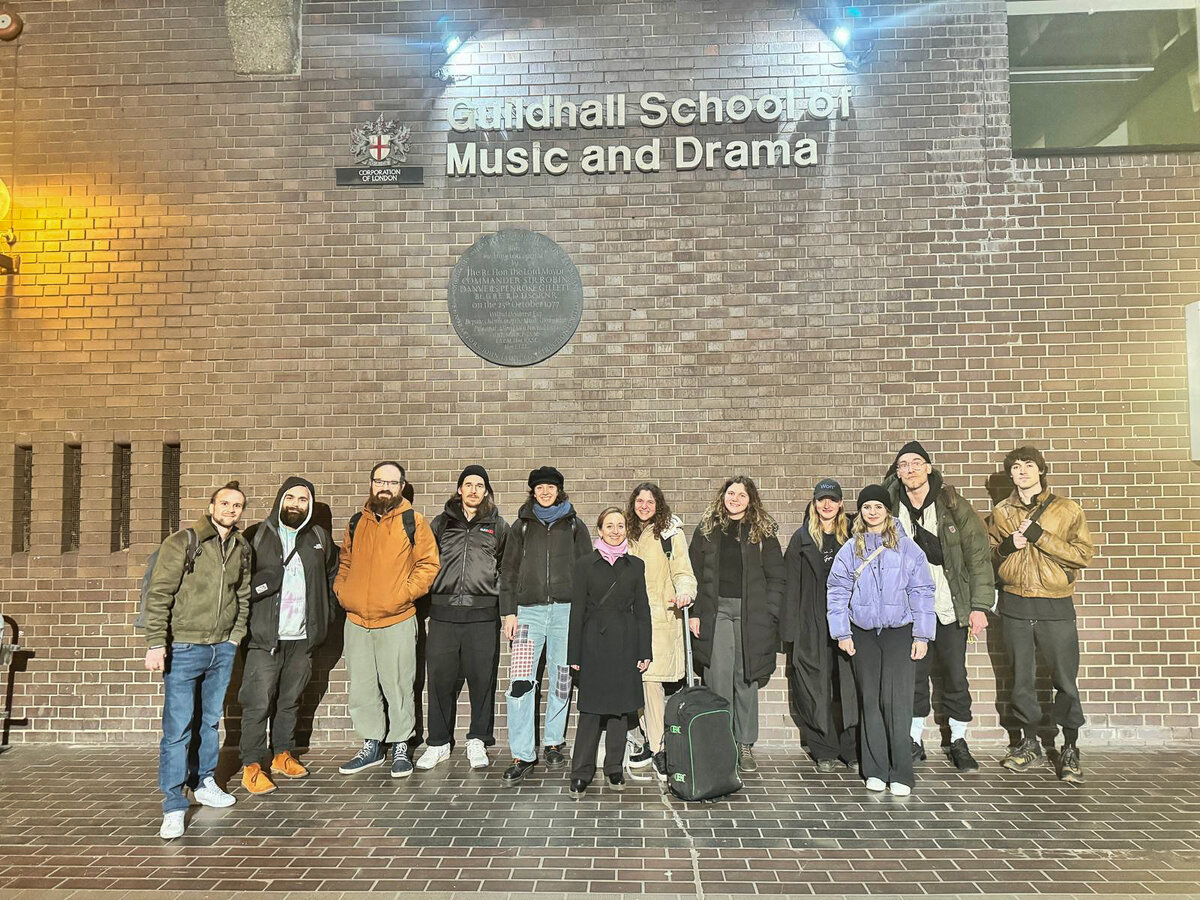
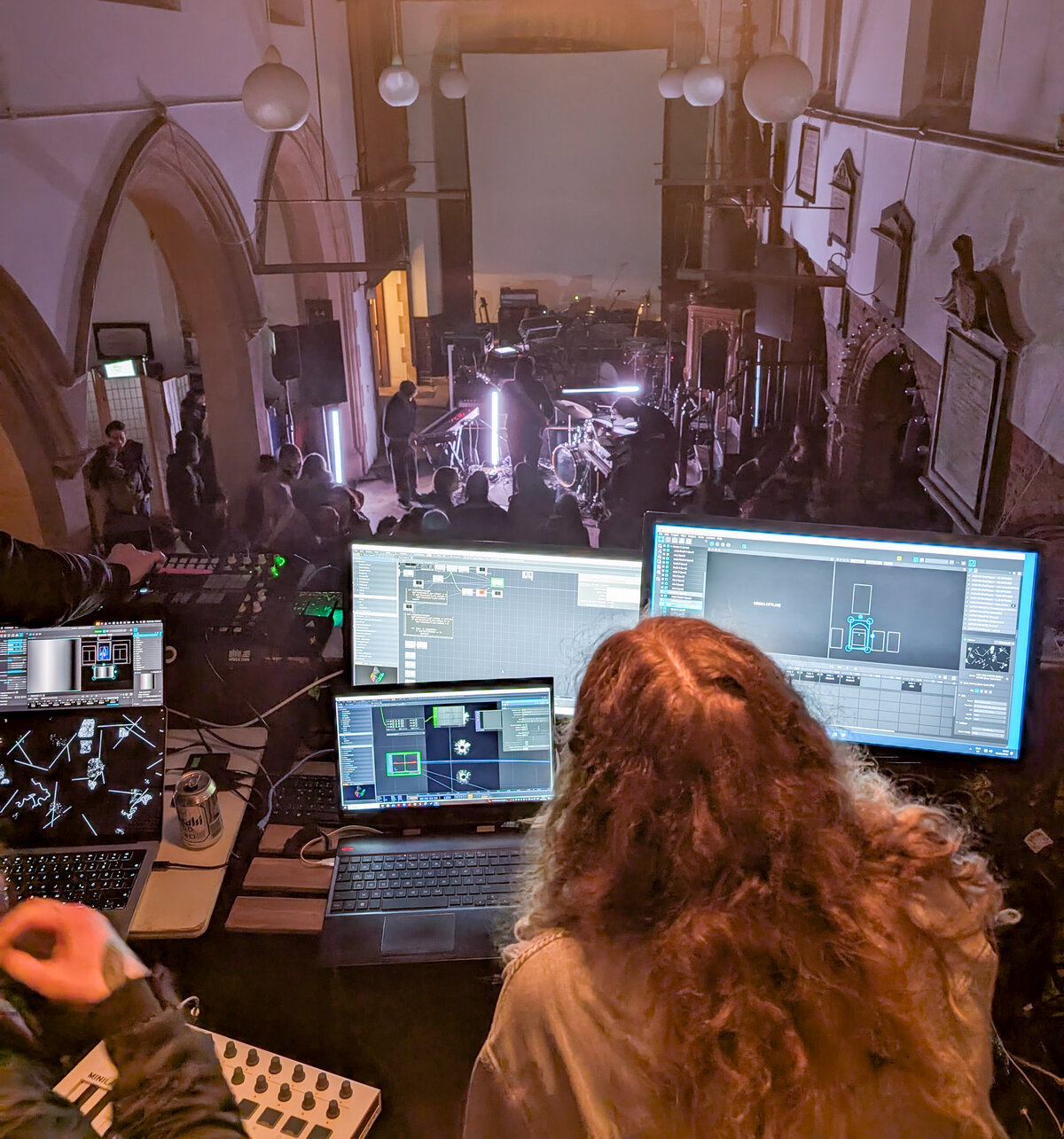
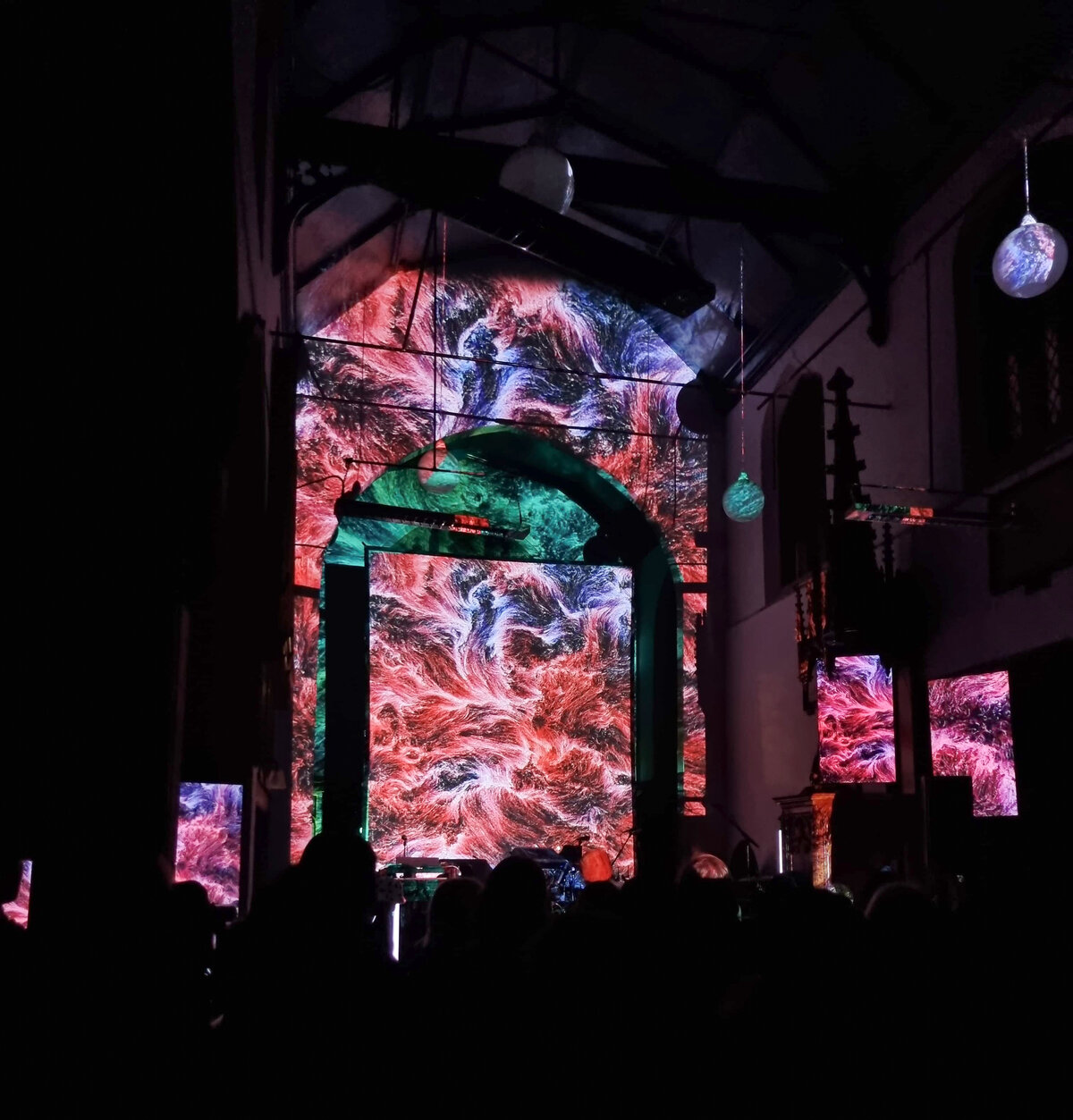
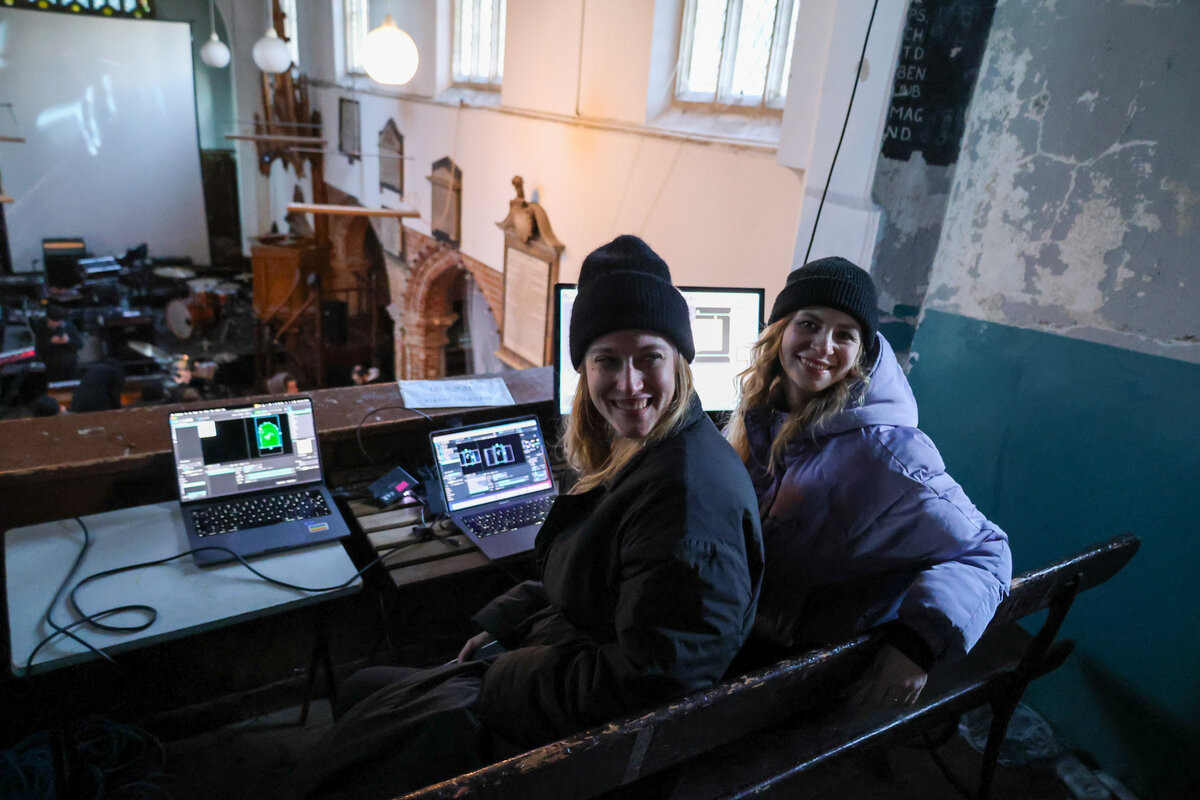
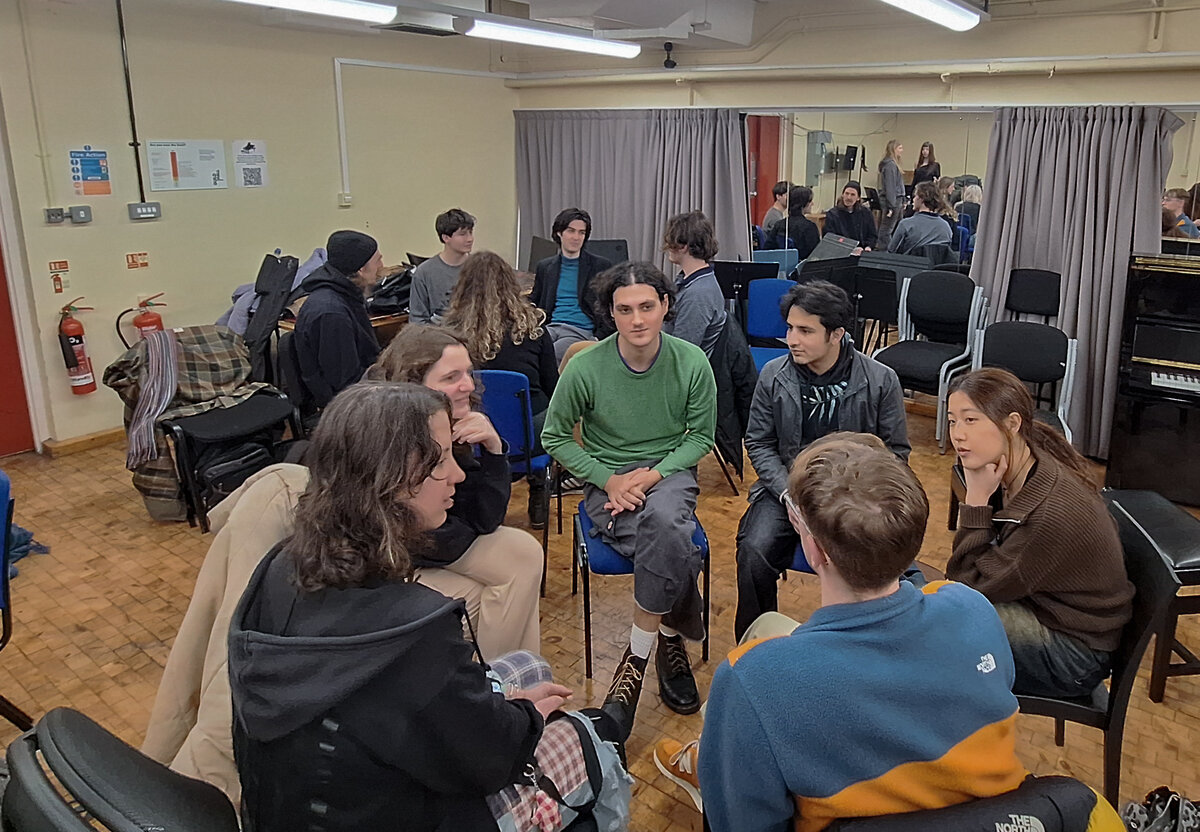
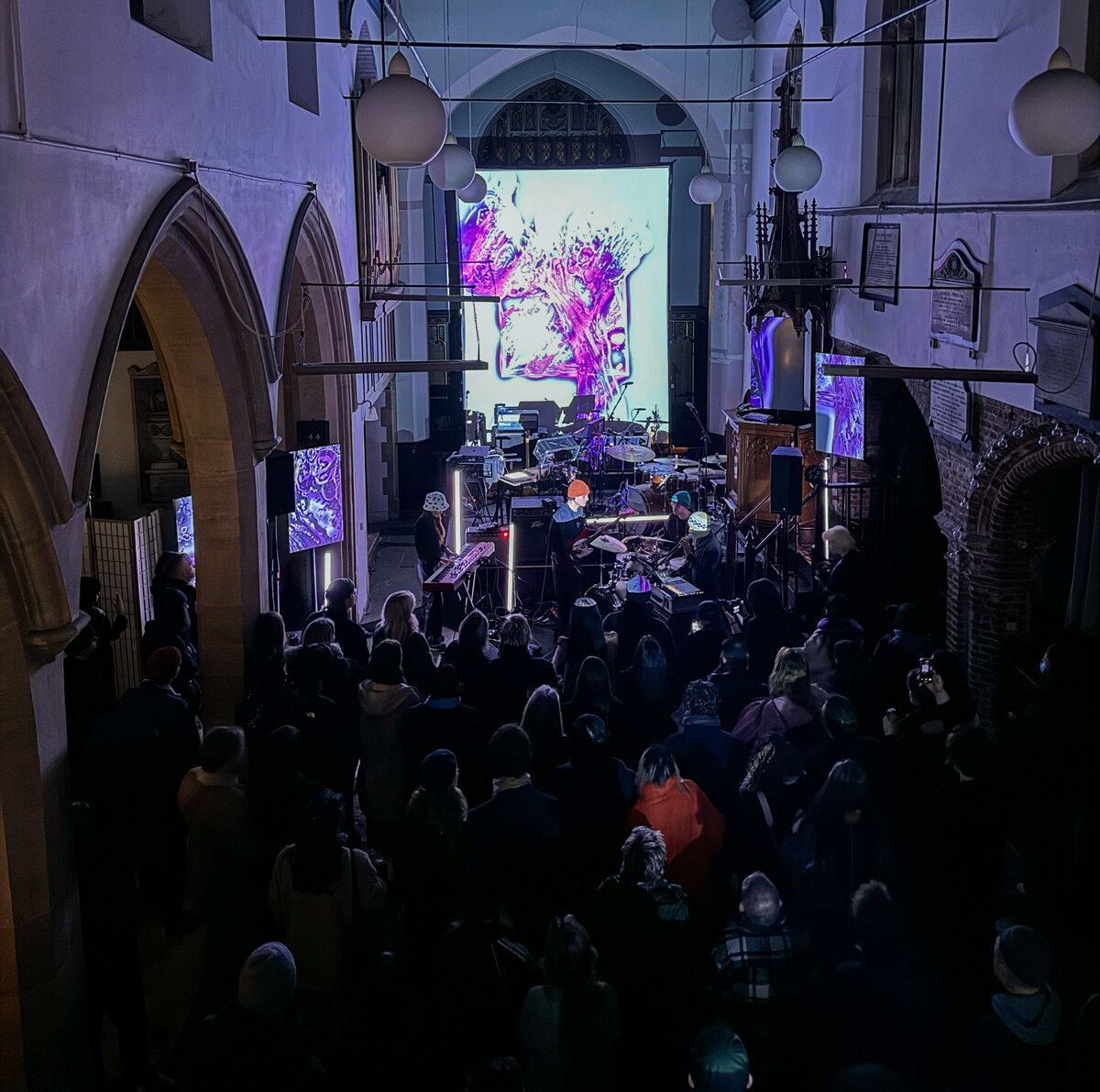

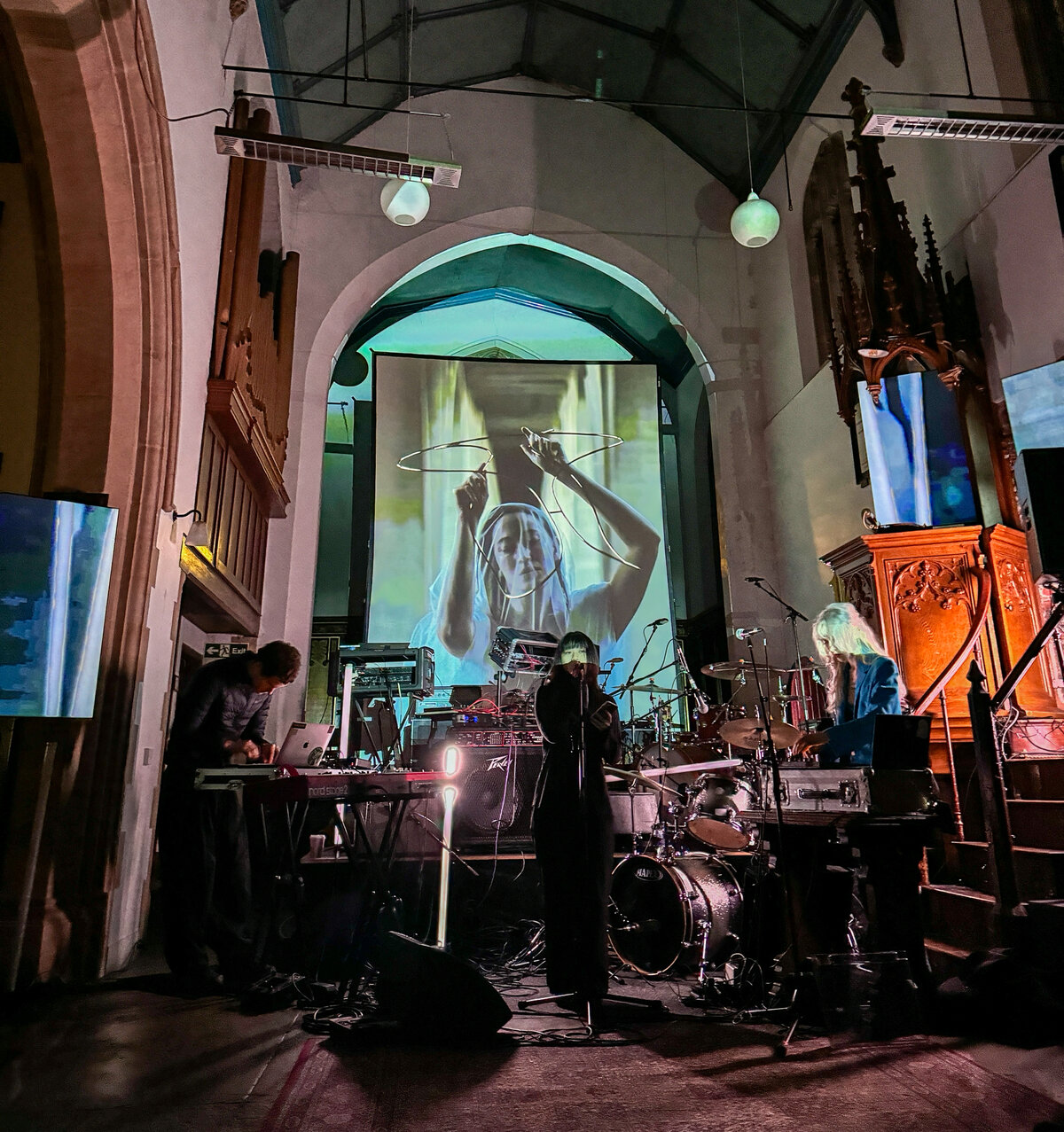
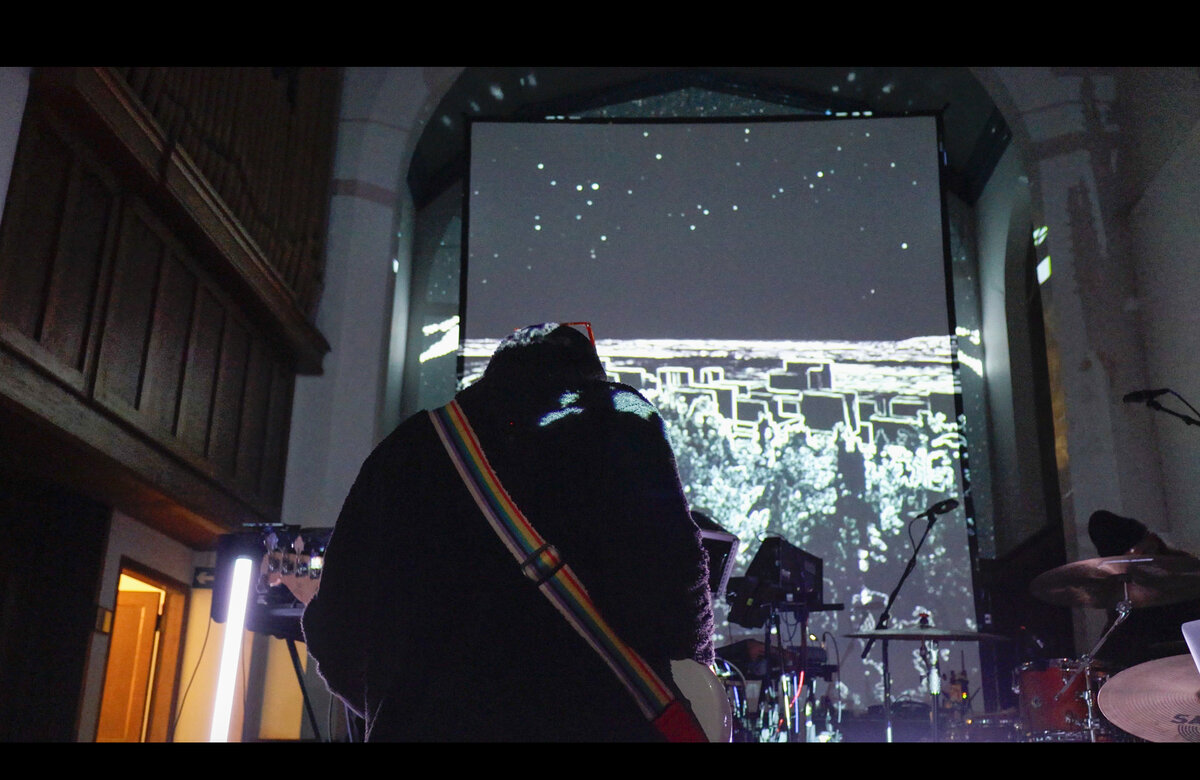
Guildhall School X FHV "Point Contact"
As part of an interdisciplinary international collaboration, the MA program in Design and Creative Leadership at FHV partnered with the Electronic and Produced Music Department of the Guildhall School of Music and Drama in London.
Together they developed an immersive, sound-reactive show, which was presented in the historic Old Church in Stoke Newington.
Using 3D mapping, the students projected visual effects onto selected architectural elements within the interior space, creating live responses to sound and providing performative impulses for the bands. The concept development had already taken place beforehand in a collaborative online setting.
This project exemplifies how students in the Design & Creative Leadership program learn to lead interdisciplinary teams, navigate technical and creative challenges, and put international collaboration into practice.
Structure
After an intensive planning phase and virtual collaboration, the final project stage began with the setup at the Old Church in London. Students from the MA program in Design & Creative Leadership worked alongside musicians from the Guildhall School of Music and Drama to bring an immersive, sound-reactive live show to life.
On site, the project teams took charge of the technical setup: projectors, lighting, and sound systems were installed and adapted to the specific requirements of the space. At the heart of the project was the close integration of music and visual design.
The visual group developed custom 3D-mapped projections, precisely tailored to the architectural features of the church. Meanwhile, the music group conducted sound checks and made final adjustments to their compositions.
Through an iterative process, both visual and auditory elements were continuously fine-tuned to achieve a harmonious interplay. Music and projections influenced each other, merging into a cohesive, immersive experience.
In the final rehearsal, the interplay of all elements was tested and fine-tuned before the show was performed live for the audience.
Design Challenge
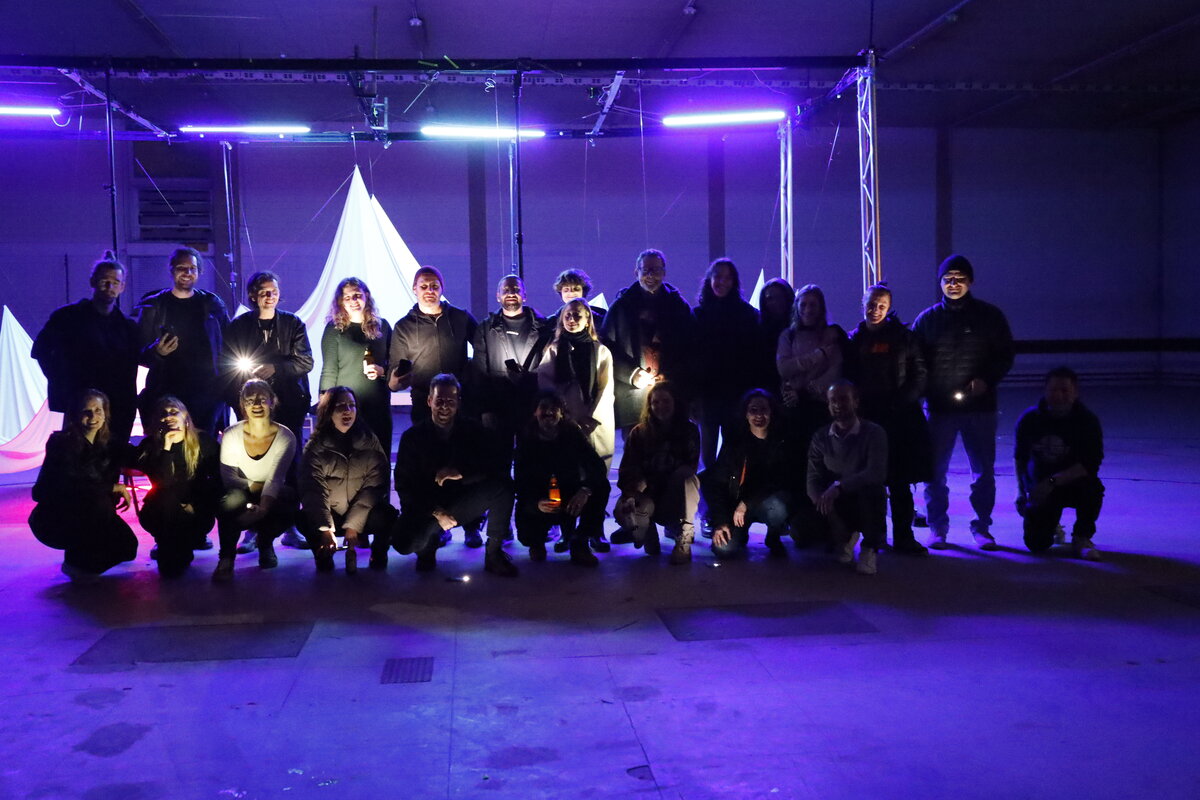
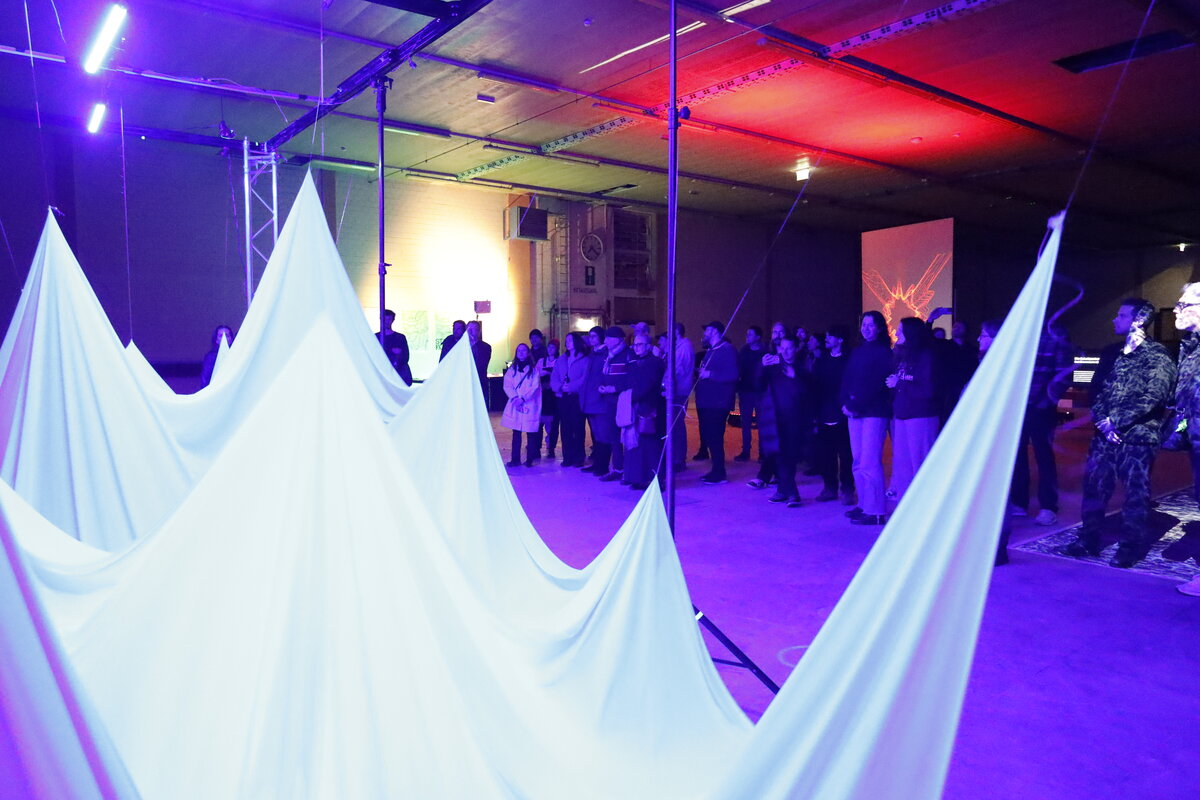
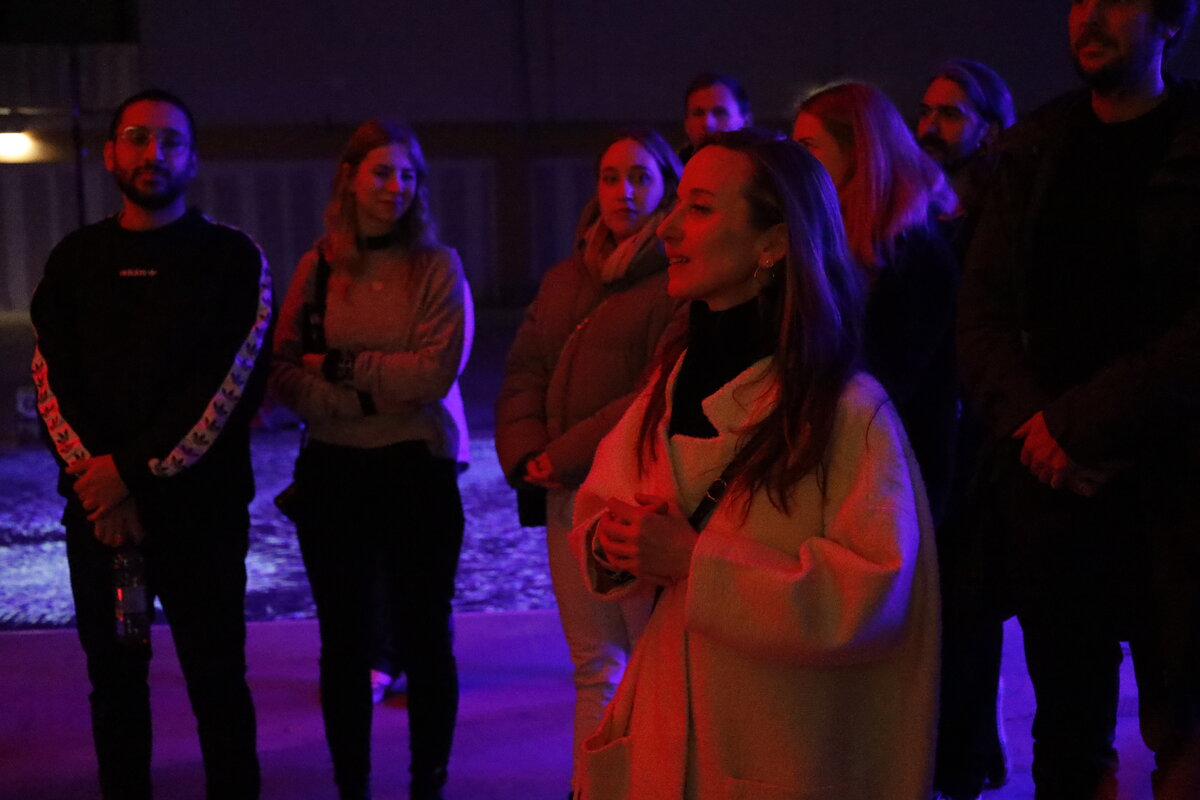
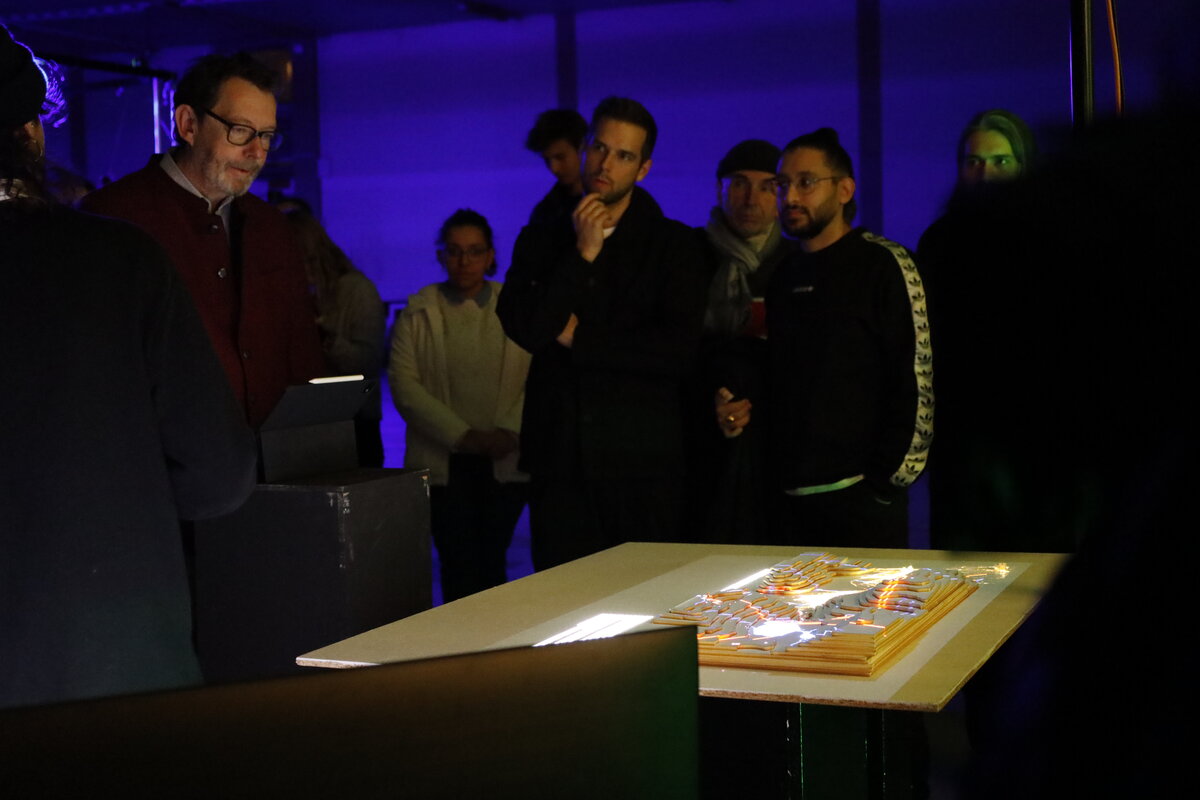
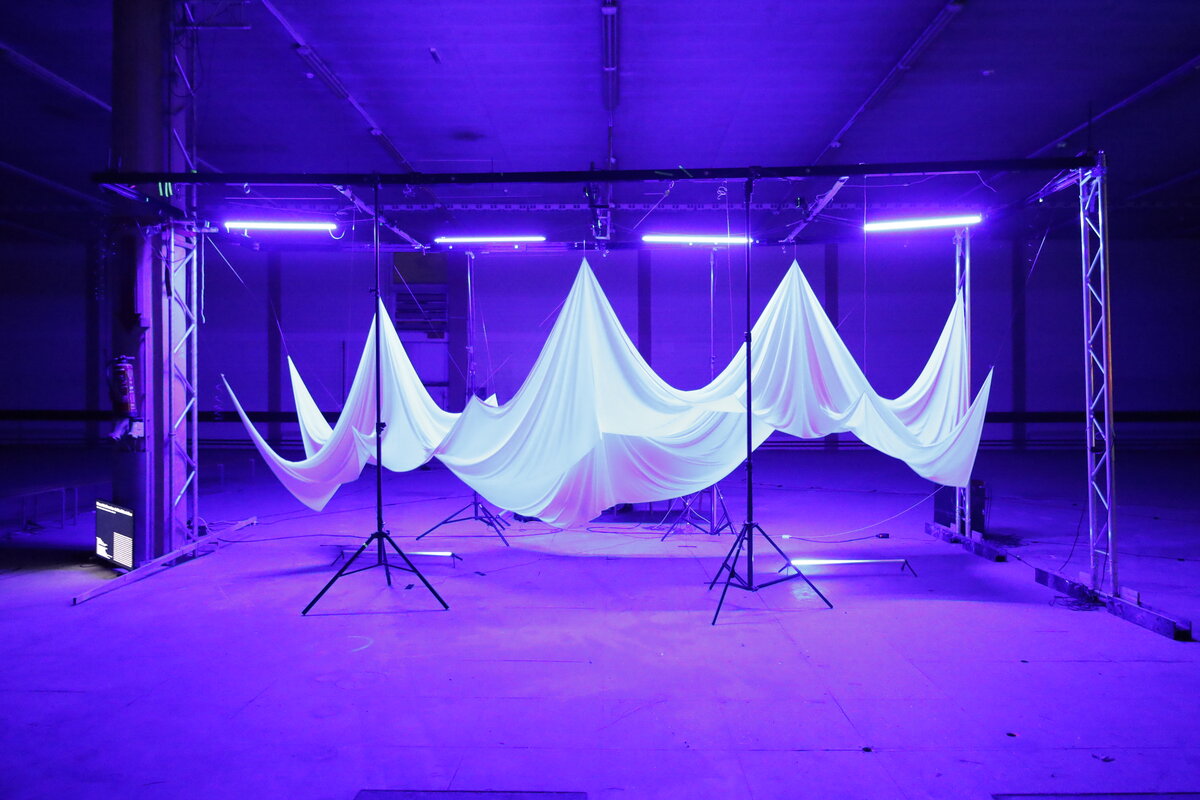
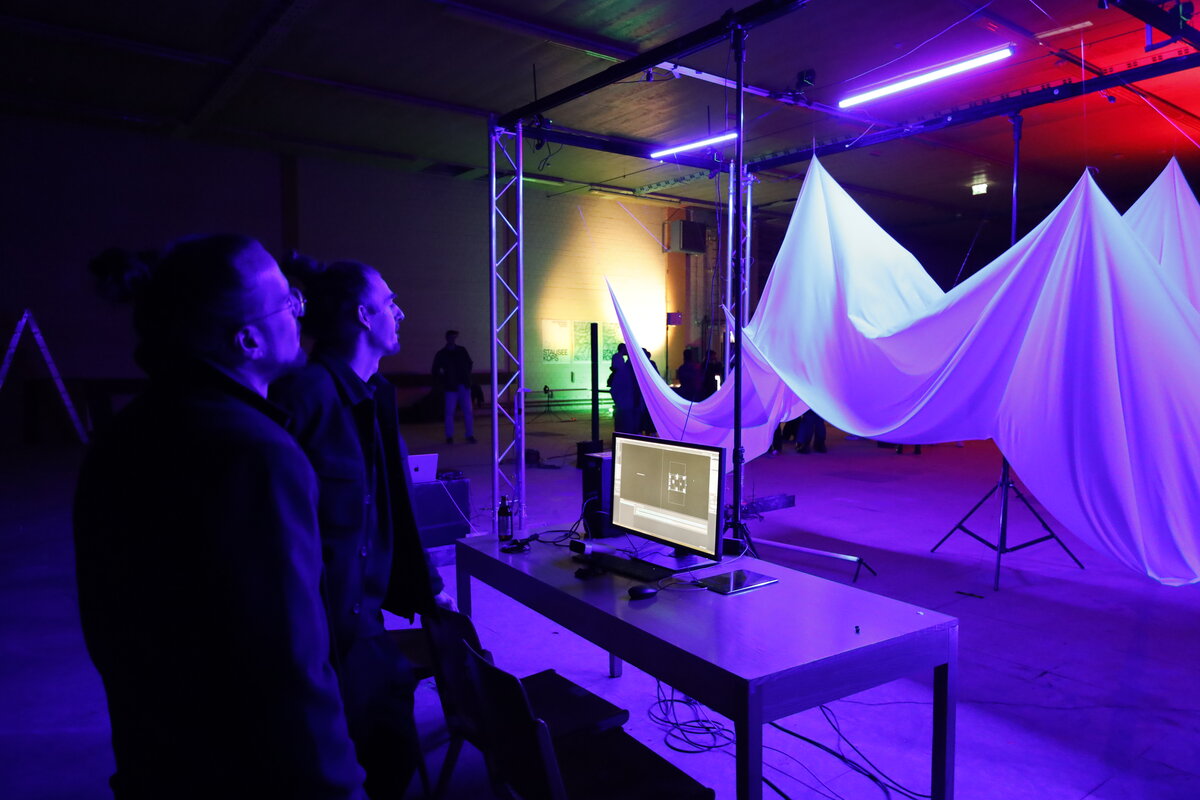
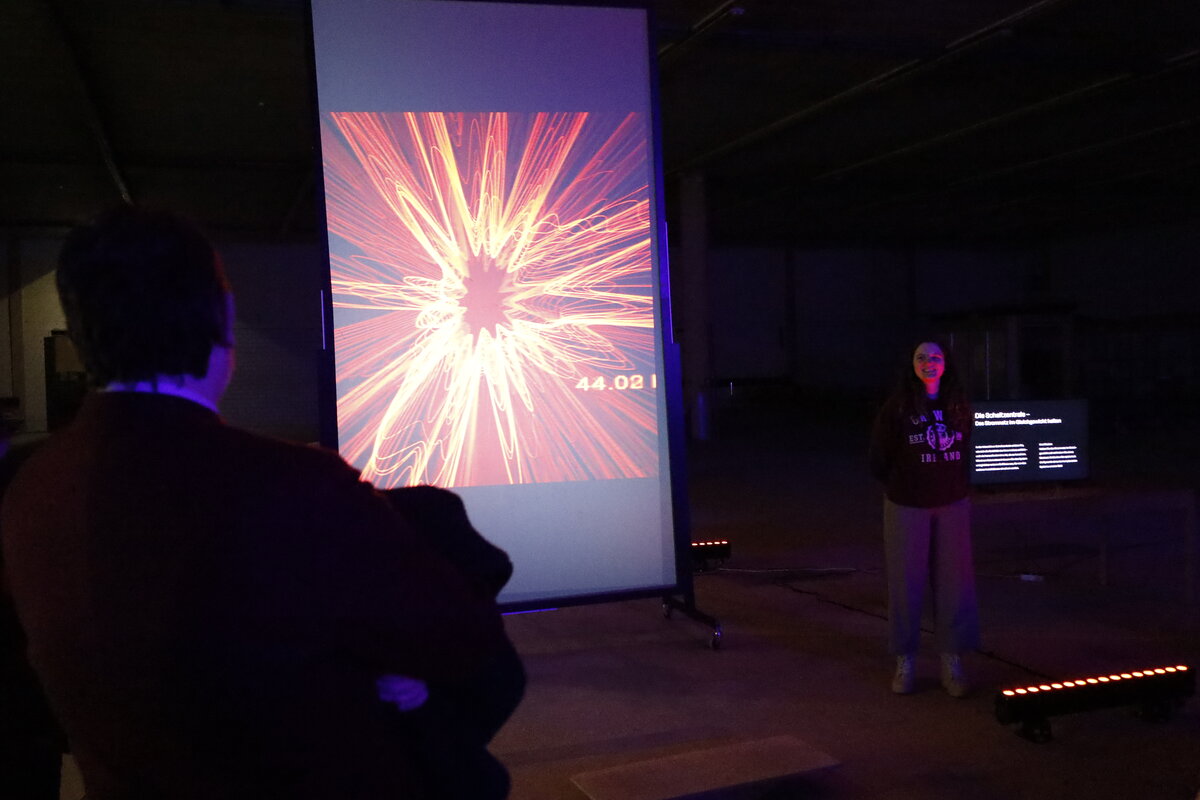

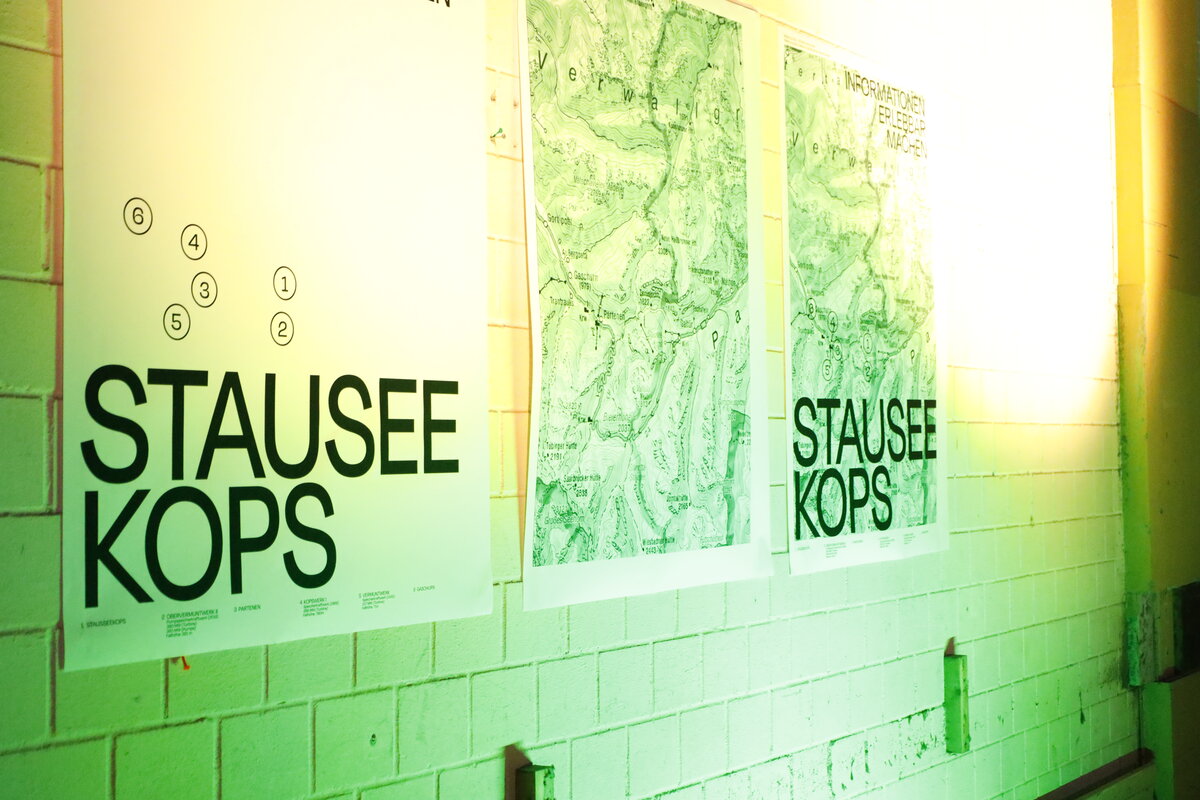
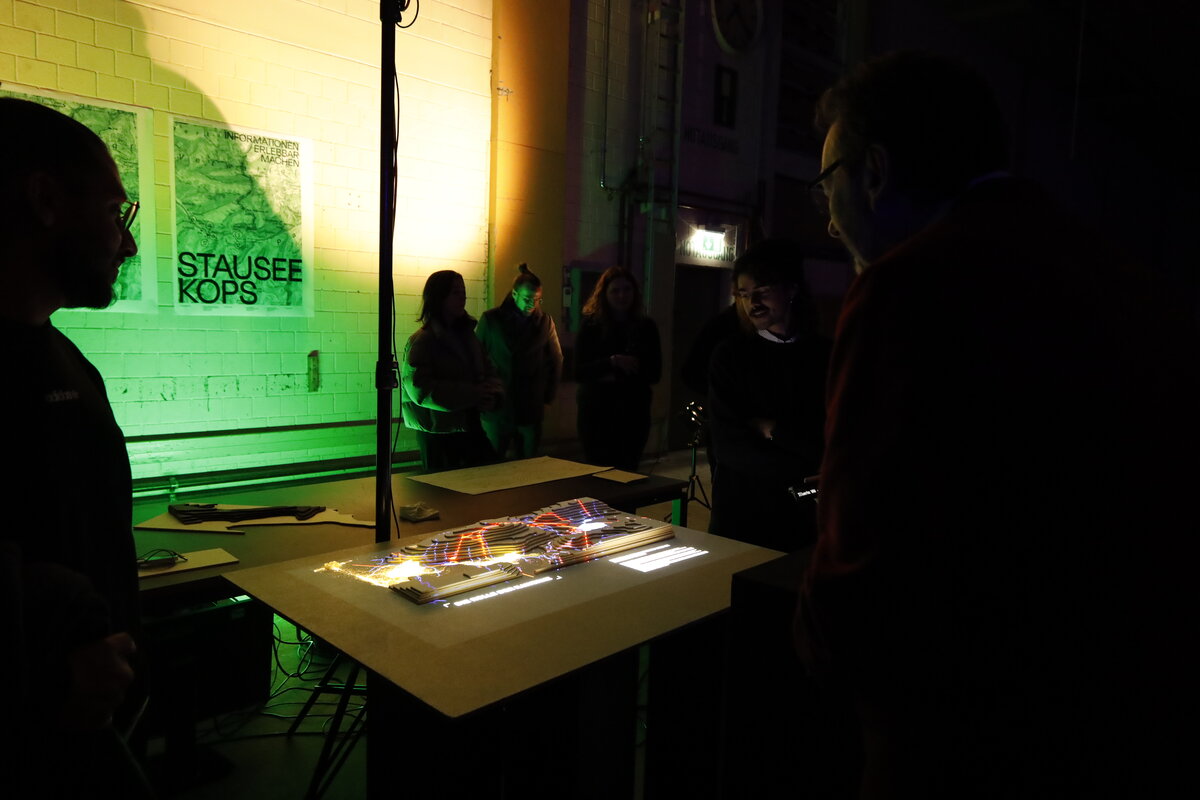
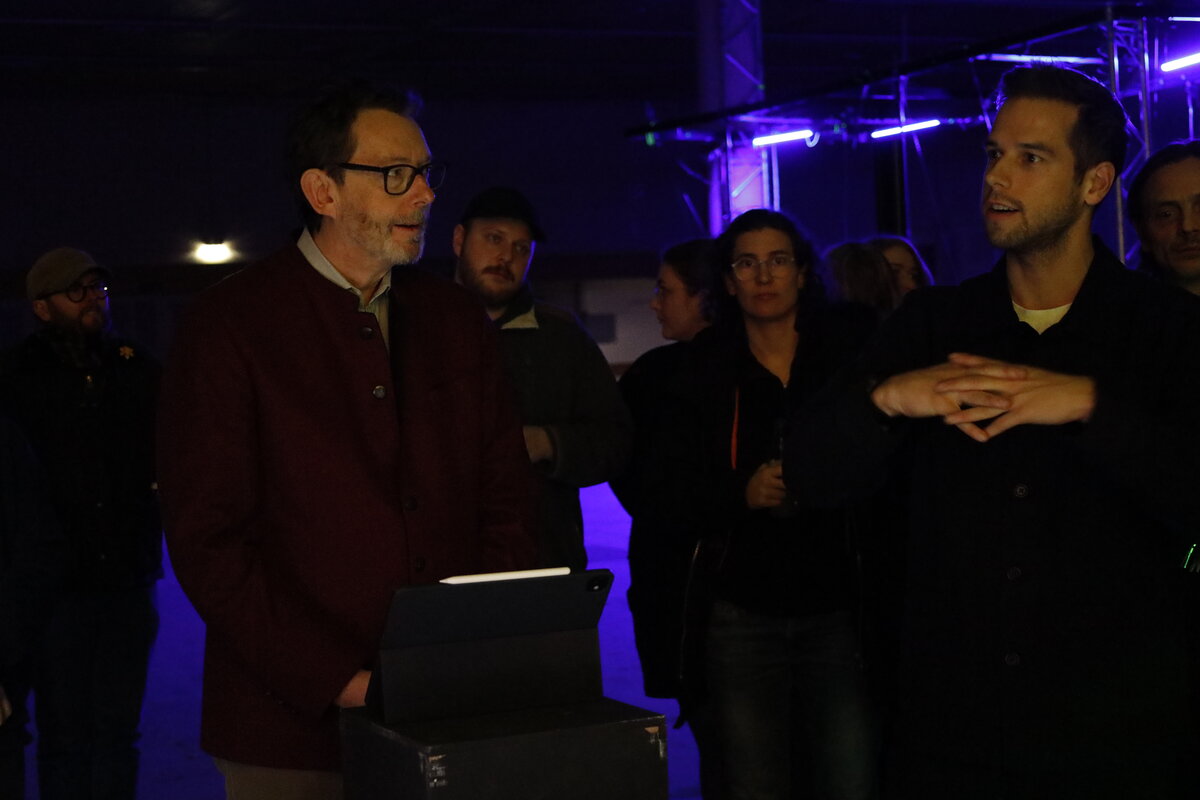

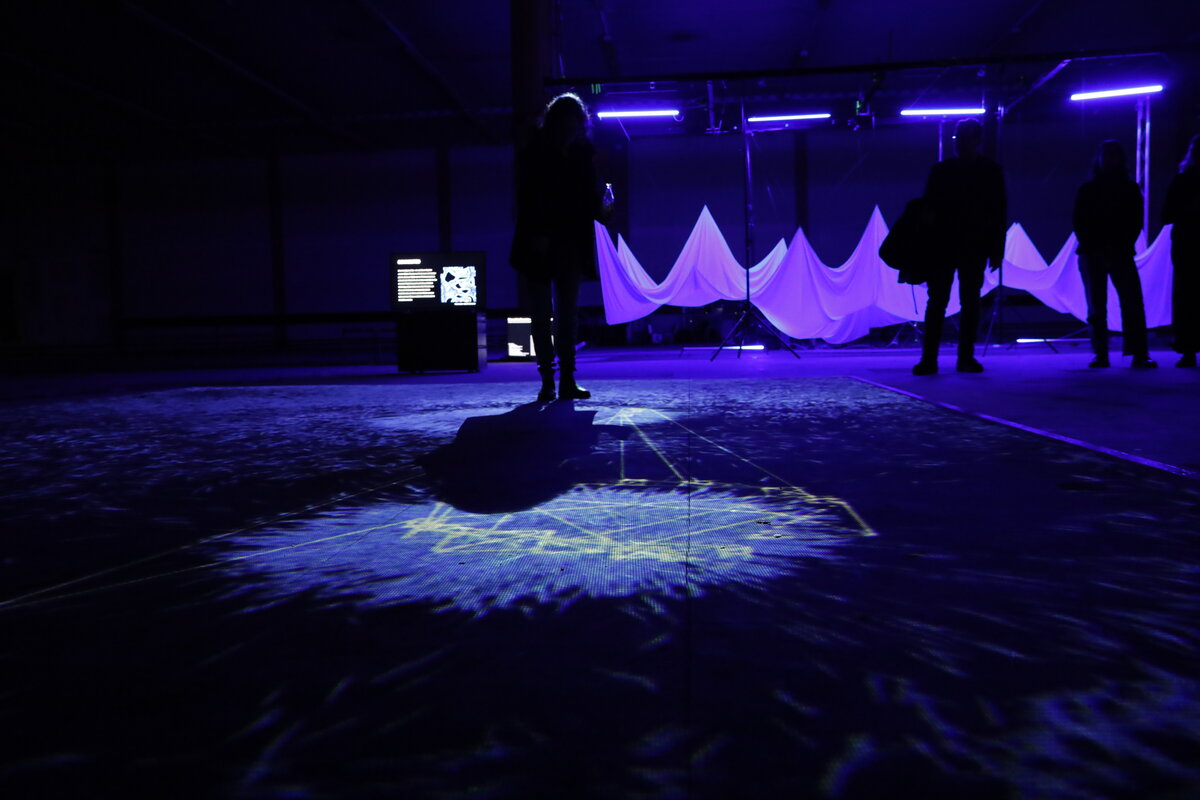
Design and Transformation Go Hand in Hand
Students from the Master's program in Design and Creative Leadership provided an insight into their work during the presentation of the results from their first design challenge. At the core of the project was the question: How can connections within the energy system be made understandable and sensorially engaging?
For six weeks, the students worked on the challenge set by illwerke vkw. The result was an immersive experience space that explores the themes of balance, network, and energy flow in an engaging and playful way. The presentation took place at CampusVäre at the end of November.
Rethinking the system
The program is open to individuals from diverse academic backgrounds: designers, as well as people from the natural and social sciences, business, and engineering, work in interdisciplinary teams to address the communication challenges of the future. "It is precisely this interdisciplinarity that distinguishes our program. This is especially important when it comes to analyzing systems and making complex connections tangible. That was the focus of the design challenge," explains program director Margarita Köhl.
"The transformation towards a renewable energy future presents key societal challenges. It requires that many people understand these changes, grasp them in their own lives, and actively respond to or shape them. This is where I see the value of approaches that create a sensory experience and think creatively 'out of the box'—instead of being solely driven by engineering logic," says Andreas Neuhauser, Head of Communications at Illwerke vkw.
White fabric sheets, draped like a mountain formation on a framework and undulating in waves—“50 Hertz” is the title of the installation, which immediately catches the eye upon entering the experience space. It continues with a floor projection where visitors become part of a living network. "In this sprint, we really went through the entire design process, from concept to model to execution. It was challenging, but incredibly exciting and educational!" says student Diana Marte.
Intensive project
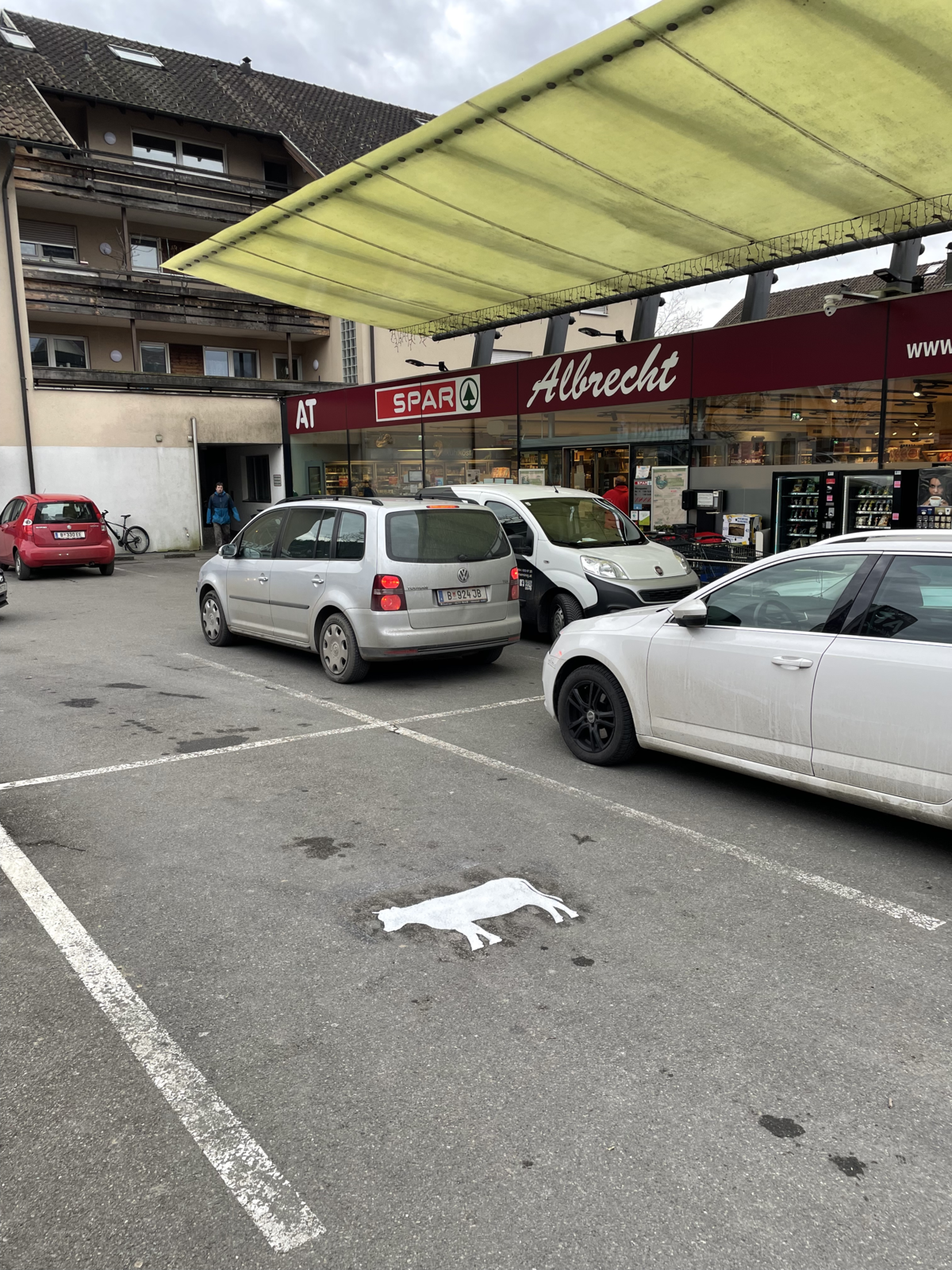
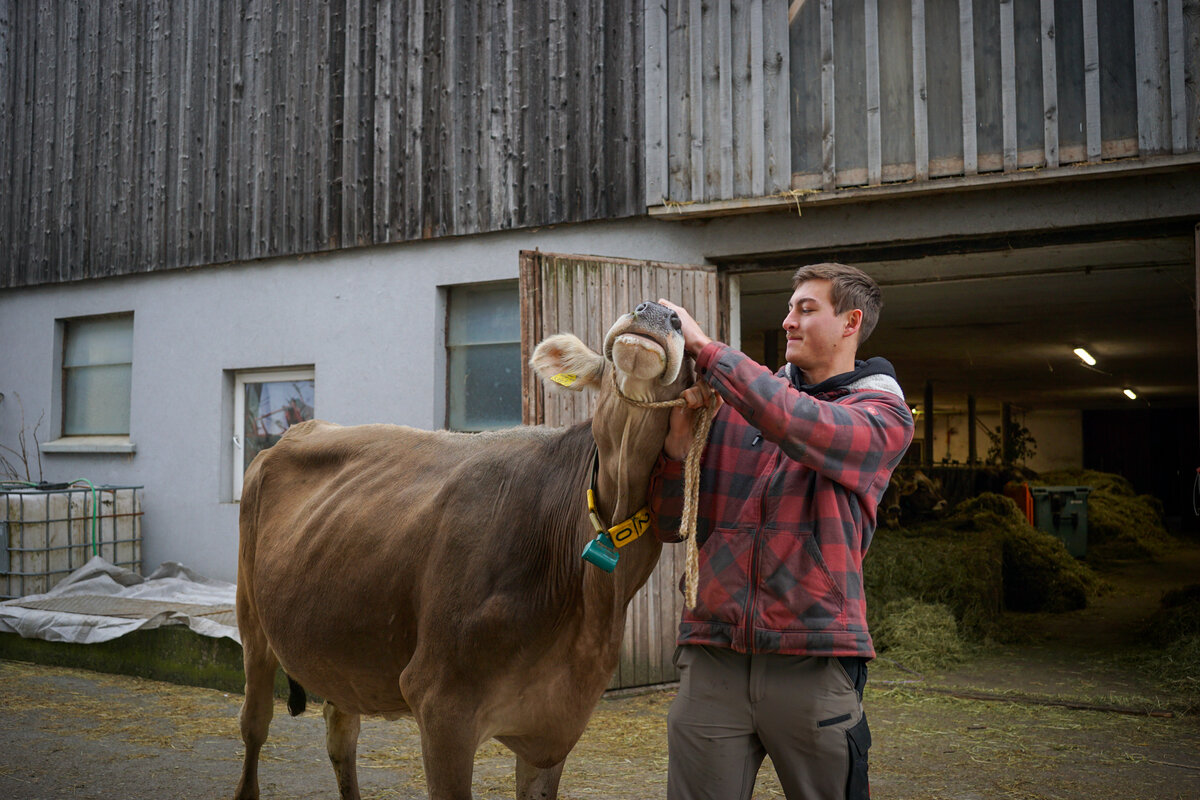
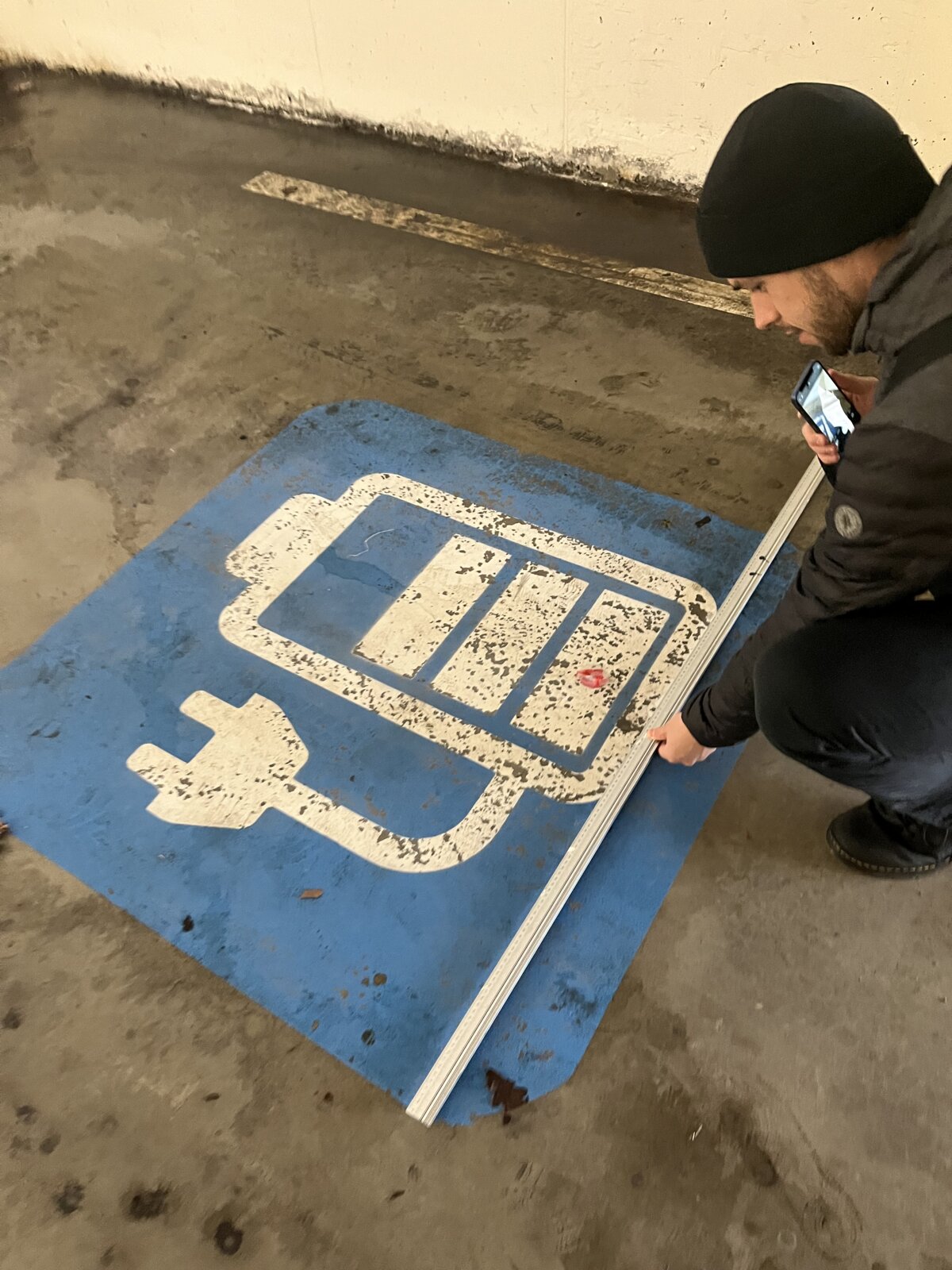
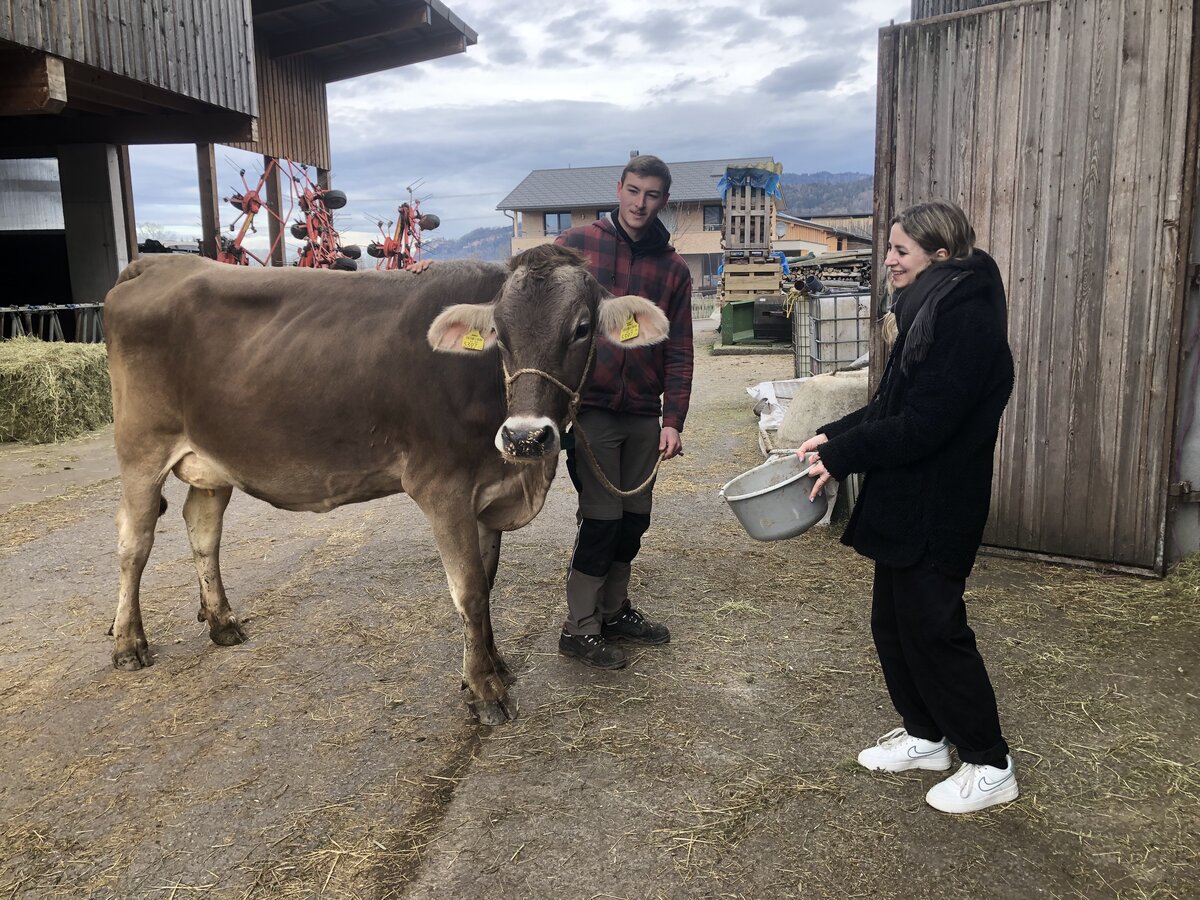
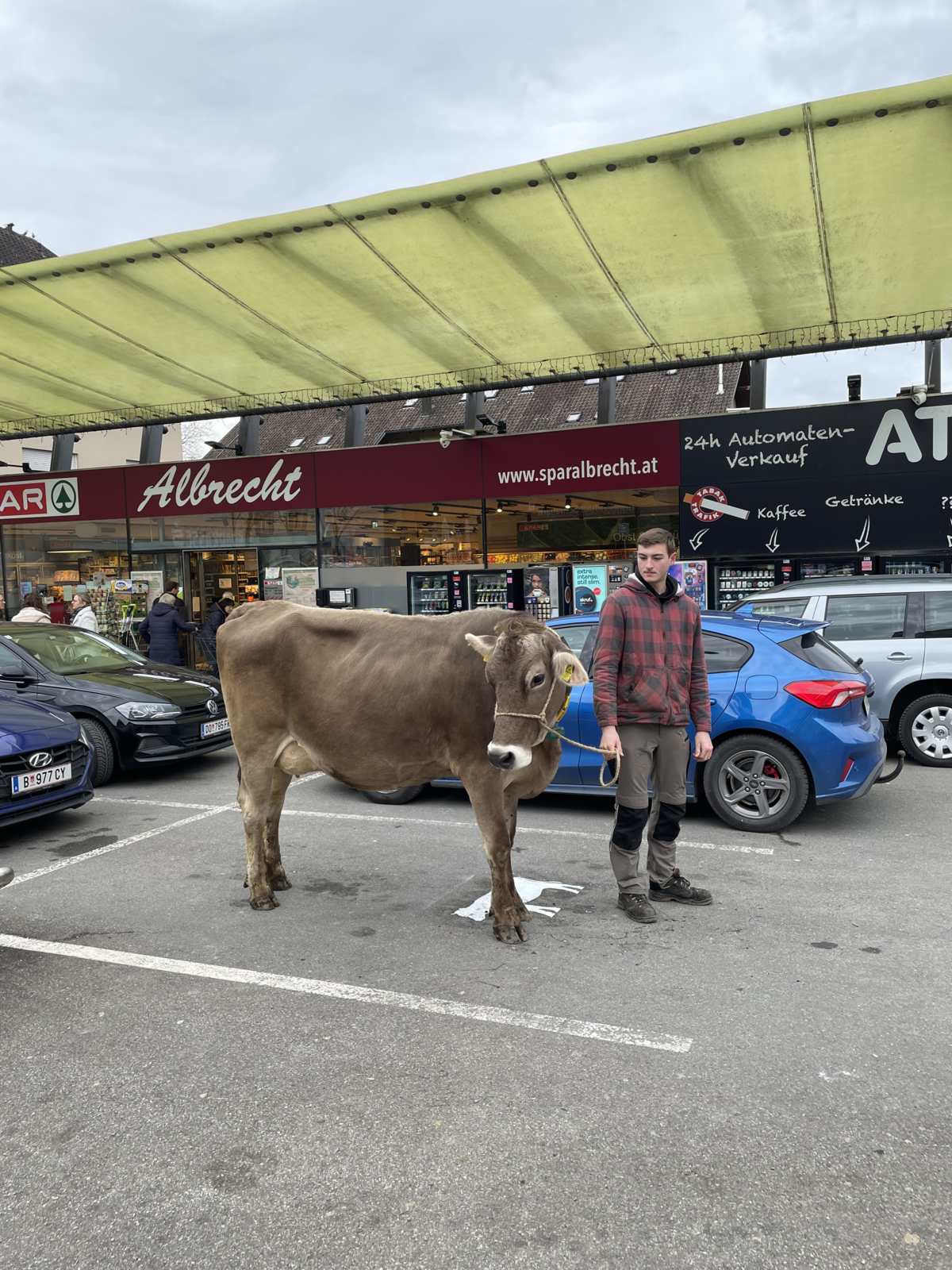
Invasion of reality
In the workshop with Frank and Patrik Riklin, the students completed a full design project within a short period of time. Guided by a set assignment, participants engaged with all phases of the design process—from research and ideation to concept development, design, and prototypical implementation.
The first semester projects in the Master's program focused on questions and challenges at the intersection of social issues and design. The students developed creative and practical solutions that addressed both aesthetic and societal aspects, successfully bringing their ideas to life in a dynamic working environment.
"Muhzone"
How much space is allocated to whom? When we look at satellite images, it quickly becomes clear who receives a disproportionate amount of space — our cars. To critically highlight this issue and draw attention to an additional imbalance, a student group staged a public intervention using a cow named "Lady."
The aim of the project was to rethink the value of animals, particularly cows, and to spark a critical discussion on the subject. The students explored how much space and worth are allocated to animals compared to vehicles. An average car parking space measures 12.5 square meters — whereas the legally required minimum space for a dairy cow is only about half that size. "Why do cows receive less space than cars?" was the guiding question behind this unusual idea.
At the Spar supermarket in Schwarzach, the students were able to bring their idea to life thanks to the support of the Haag farming family and the store management. Together with the cow "Lady," the students walked from the farm to the supermarket. In front of the Spar store, a designated "cow parking space" had already been prepared, marked with a cow icon and a sign reading "Kuhnden" (a playful twist on the German word for "customers").
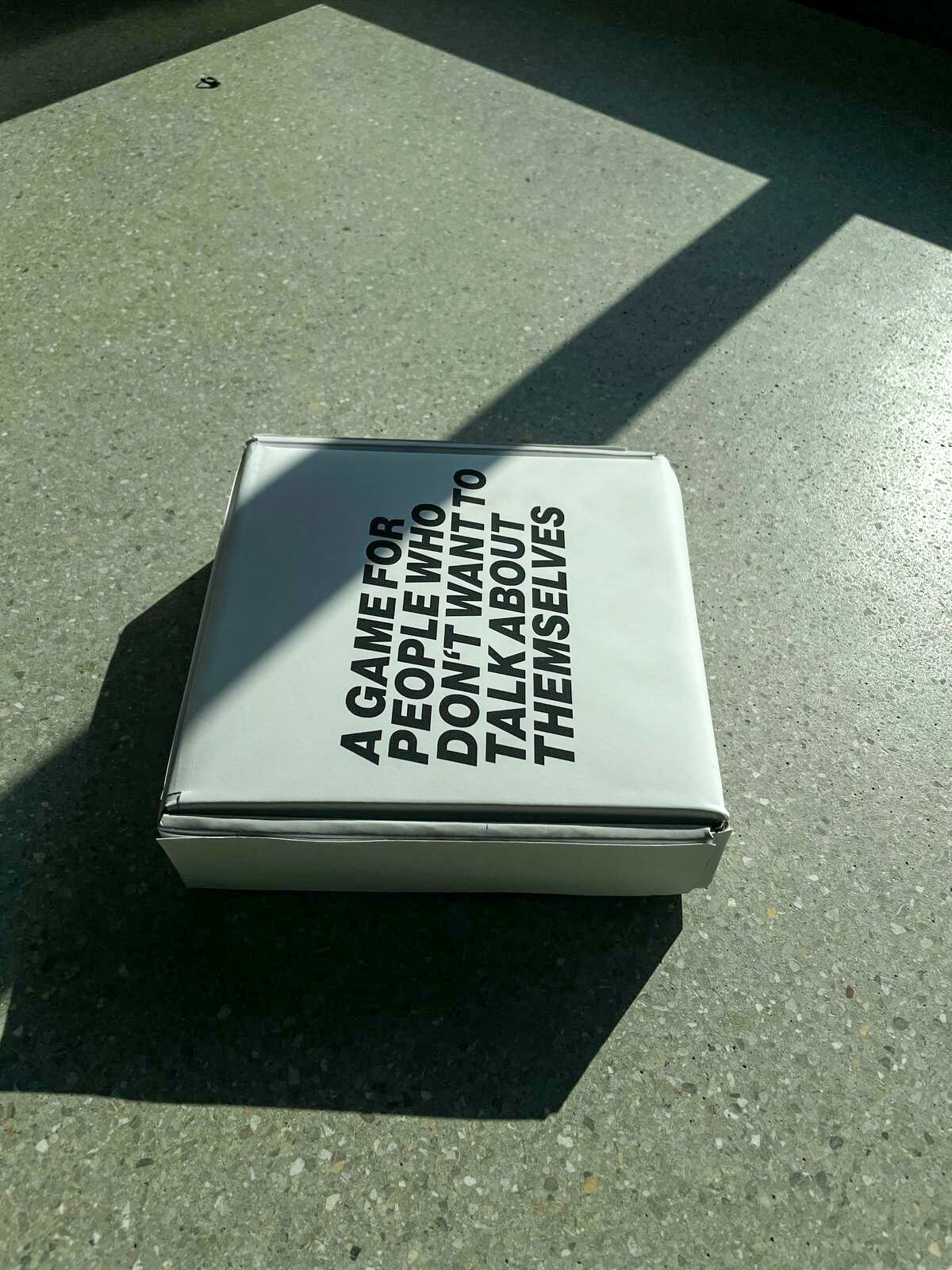

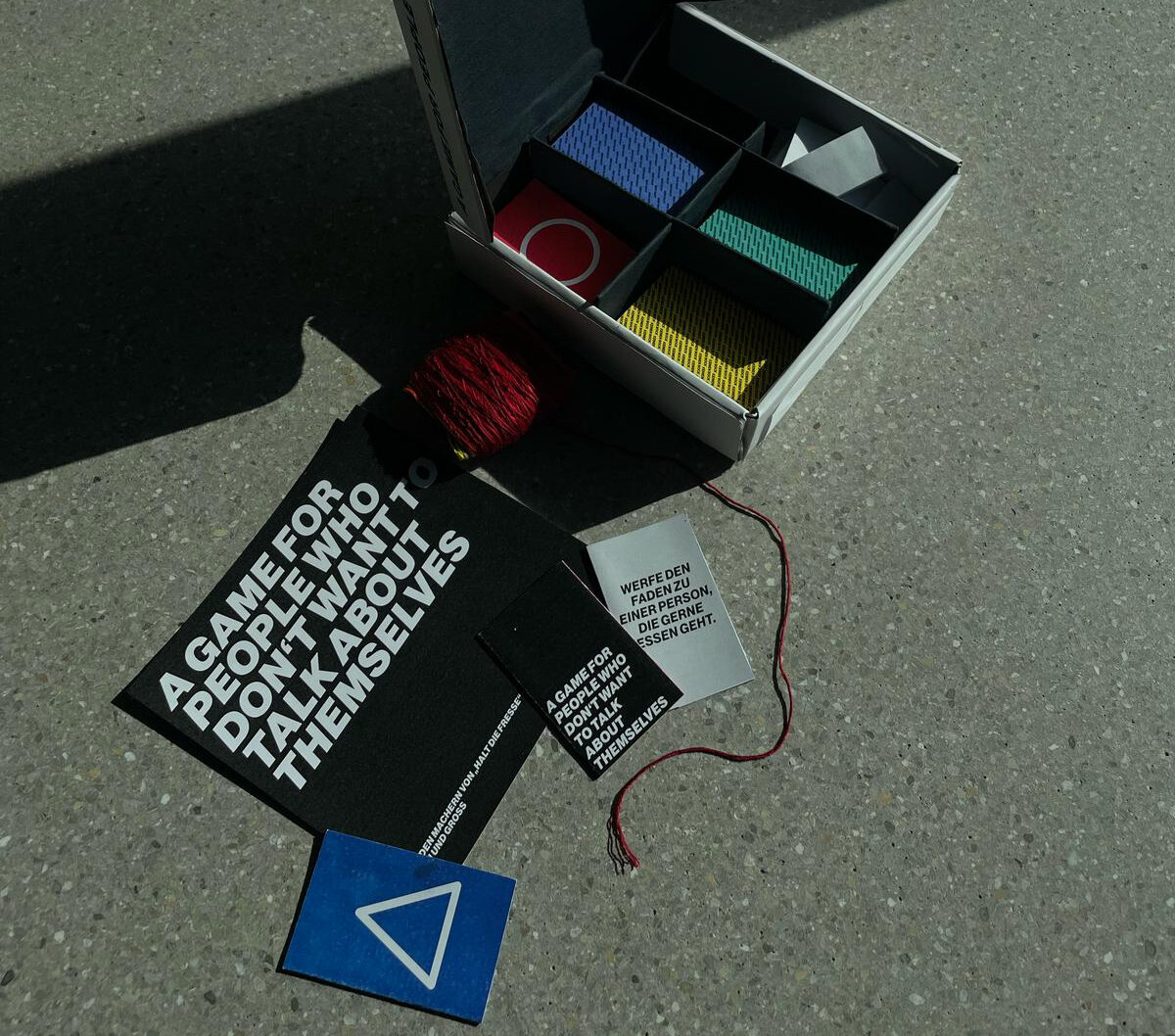
SichtWechsel - new perspectives and a fresh look at the given
In a three-day design workshop with Katharina Mischer, co-founder of mischer'traxler studio, the students worked in three overarching groups — social, ecocentric, and fantastical. They combined invented fantasy words like "Nebulon" or "Moosoph" with real locations and actors.
In a hands-on setting, they developed experimental concepts that allowed people to experience the world in surprising new ways. The aim of the workshop was to playfully and creatively shift perspectives and to challenge existing ways of thinking. The students drew on their versatility to create innovative ideas that addressed both aesthetic and functional dimensions.
No buck game
The students developed an introductory game that deliberately differed from traditional formats. They asked themselves the question: Why are these games taken for granted instead of questioning them? Couldn't there be a version that suits them better?
For this reason, they designed a new concept - a game that offers a more engaging and authentic way to connect with each other.
Research laboratory
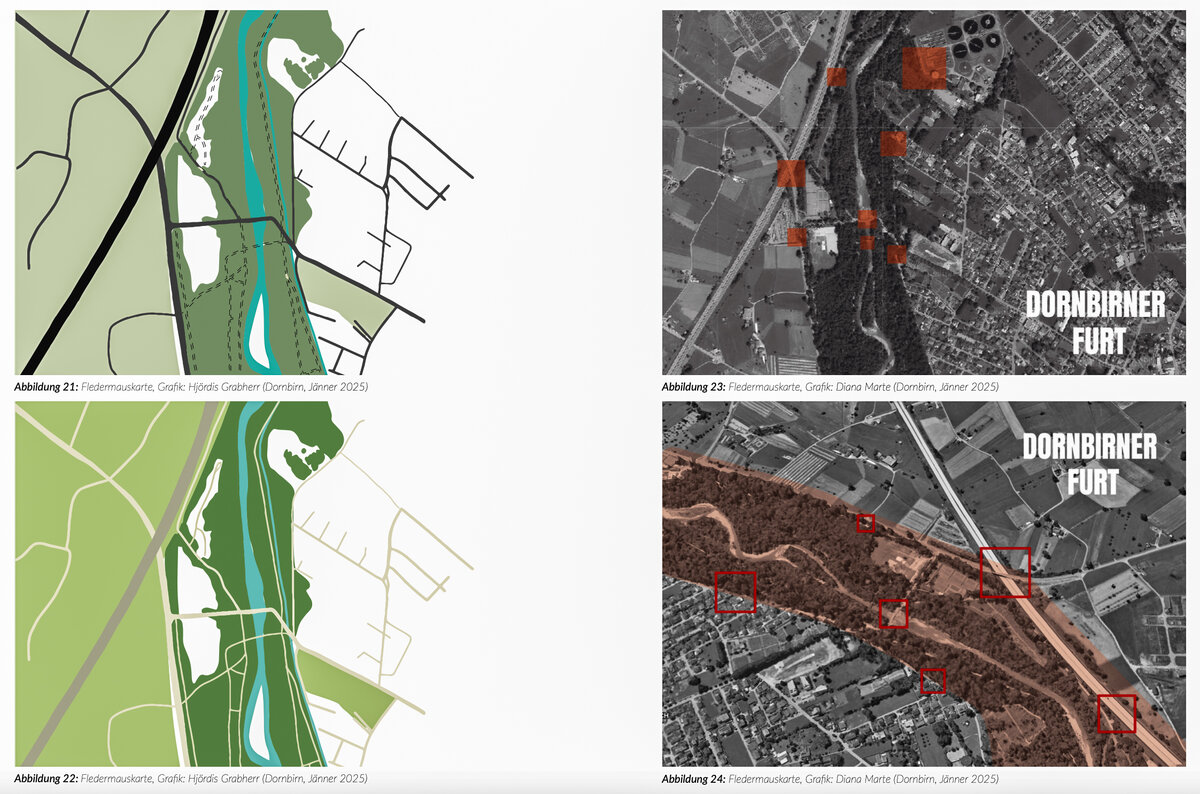

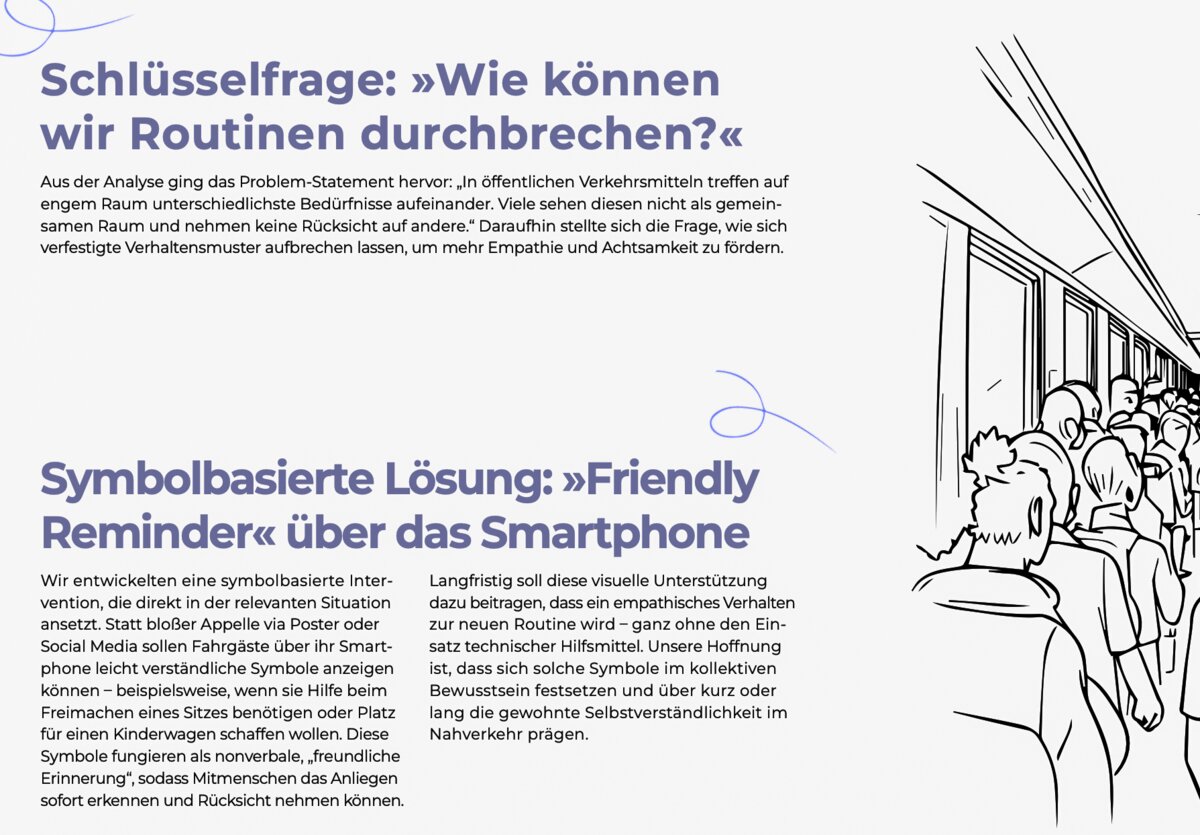
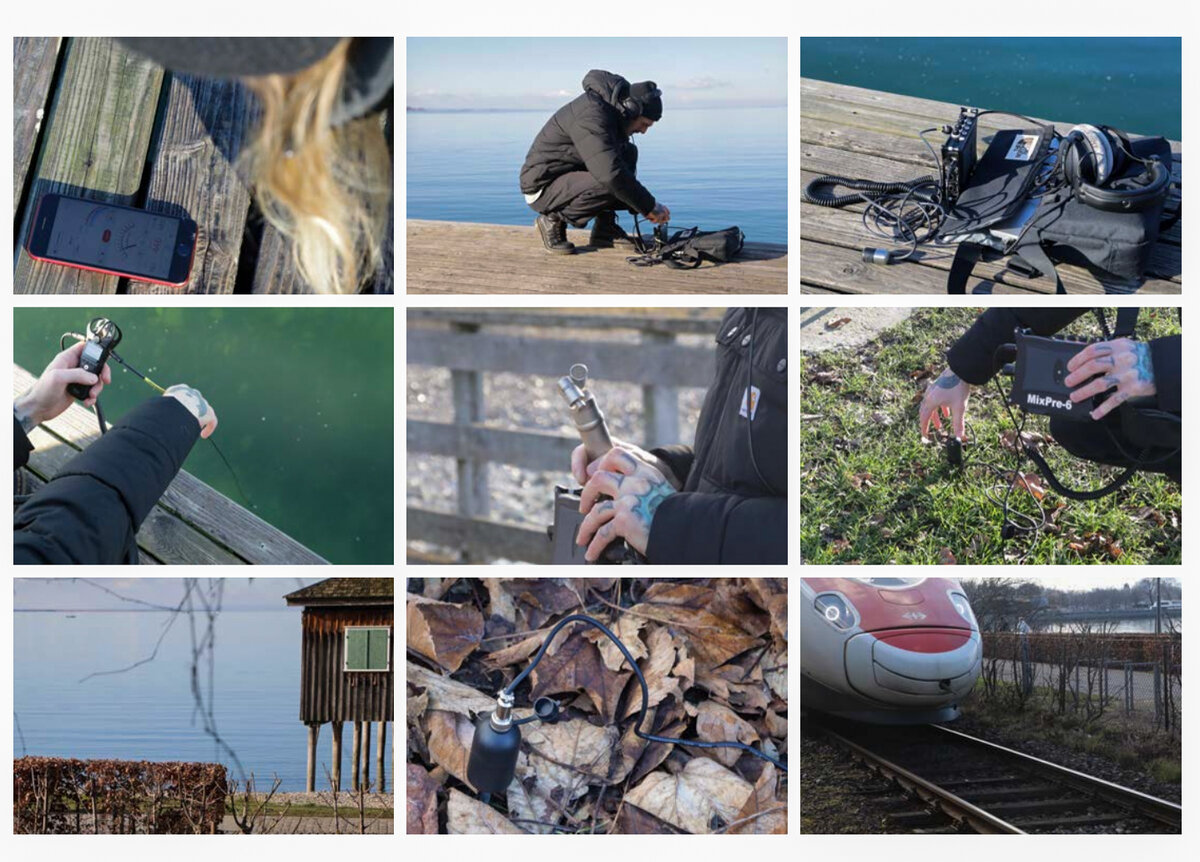
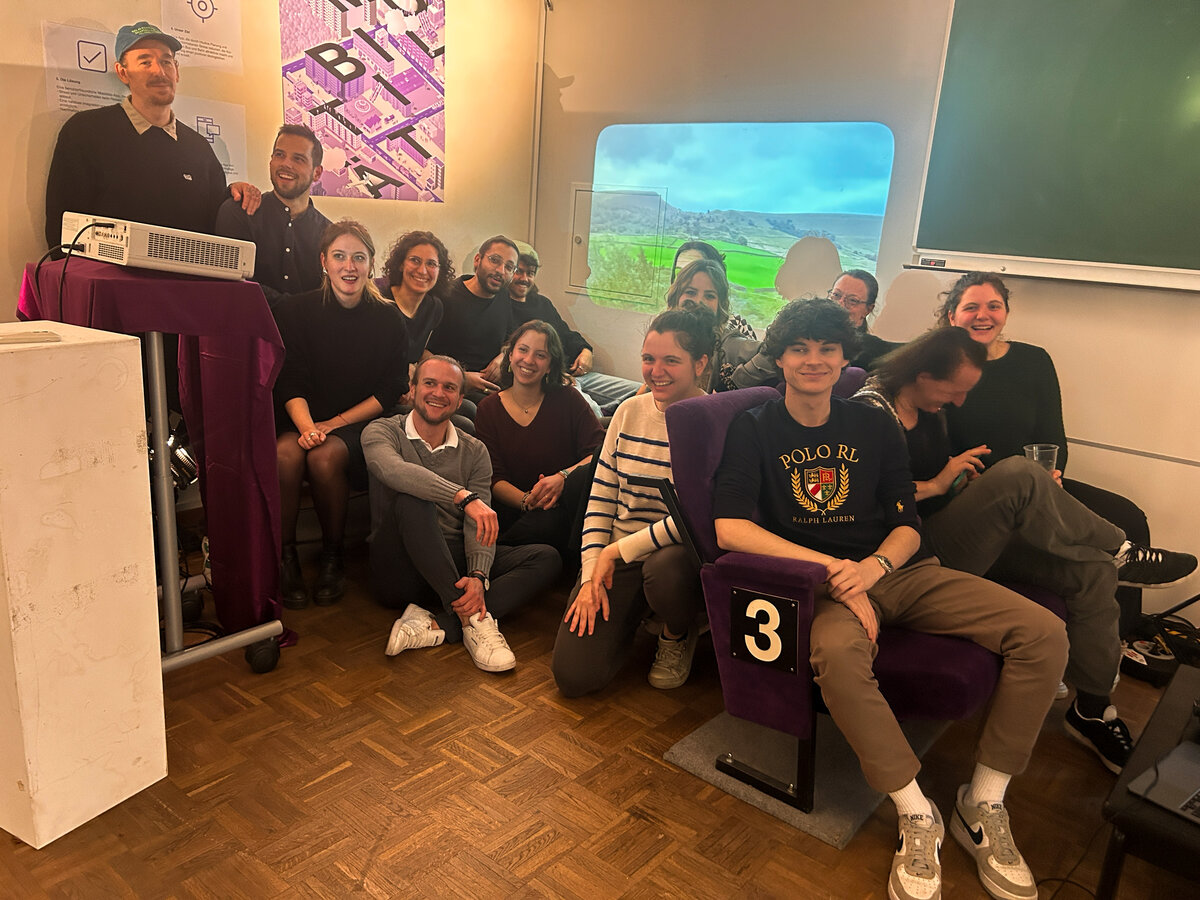
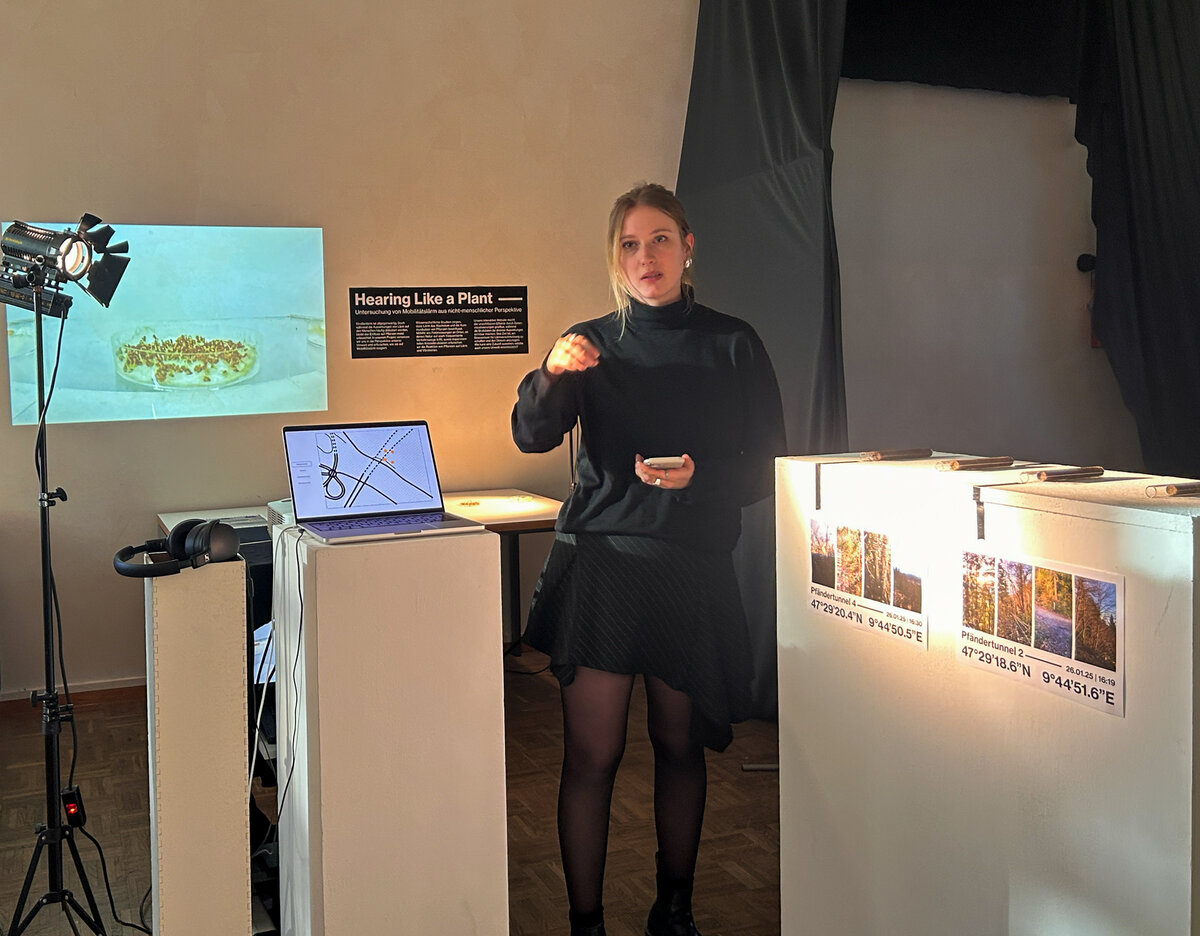
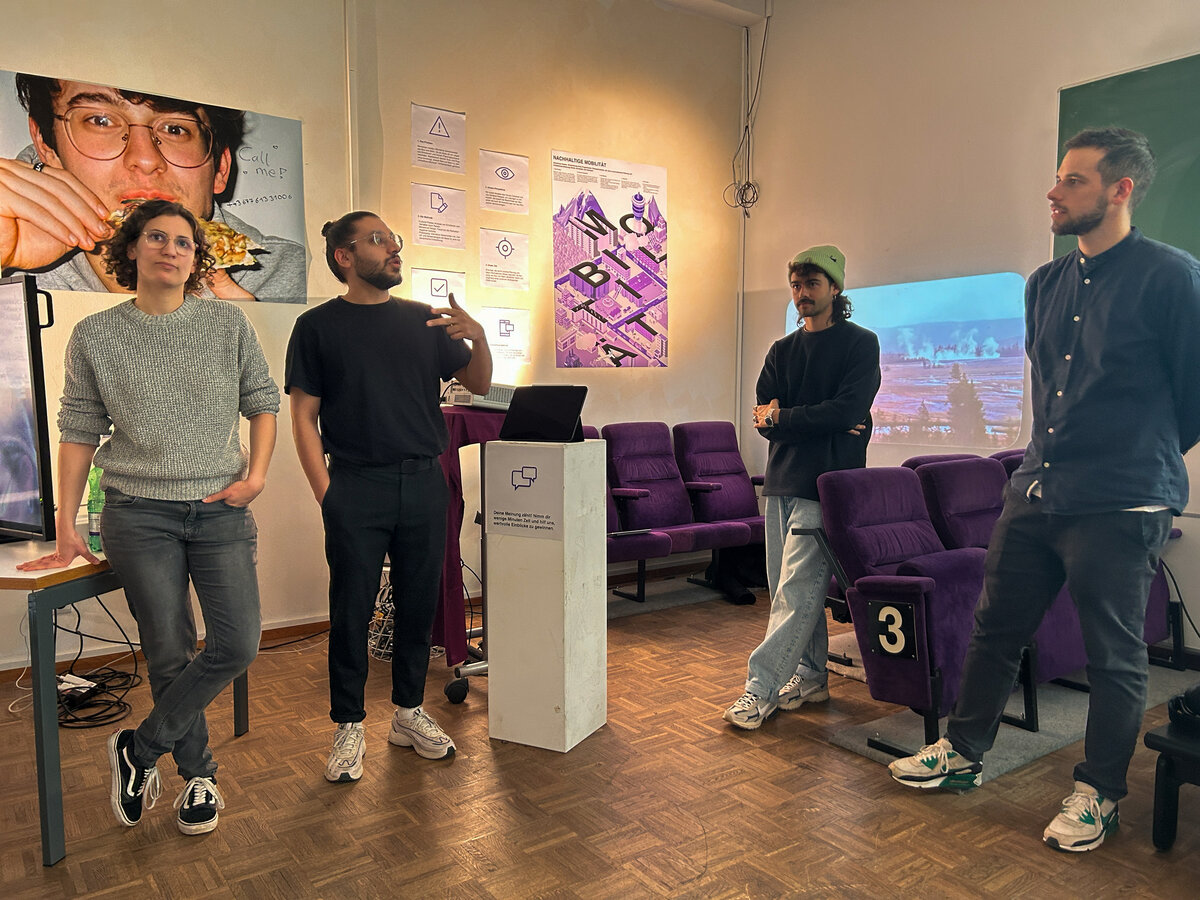
In the first research lab of the Master's program, design research was the central focus. Using the theme of mobility, students were given a hands-on introduction to research-based design processes – from the initial data collection to prototypical implementation.
At the outset, the students gathered initial impressions and data using cultural probes – a qualitative research tool that reveals personal experiences and perspectives. This approach was complemented by engaging contributions from experts such as Mirjam Steinböck (IG Cultur), who shed light on the social and cultural dimensions of mobility.
Perspectives and questions
Building on these insights, the students independently chose perspectives and research questions, which they explored further in small groups: How do people experience mobility in their daily lives? What obstacles do they encounter? What innovative or unseen solutions can be designed?
Prototype and online journal
The groups conducted further qualitative research, analyzing routines, perspectives, and contexts – and developed initial conceptual and design prototypes. This inductive research process was accompanied by reflections and discussions, which ultimately evolved into independent articles. In a workshop with Michael Marte, a collaborative online journal was created that documents and interconnects the various research processes. Here, the students not only present their results but also offer insights into their methodological choices and individual approaches.
Interactive exhibition
At the end, the students presented their prototypes as part of an interactive exhibition. Visitors were invited to help design, comment and give feedback. The exhibition thus not only became a showcase, but also part of the research process itself - as a place for evaluation, discussion and further development.
Wheel of Power
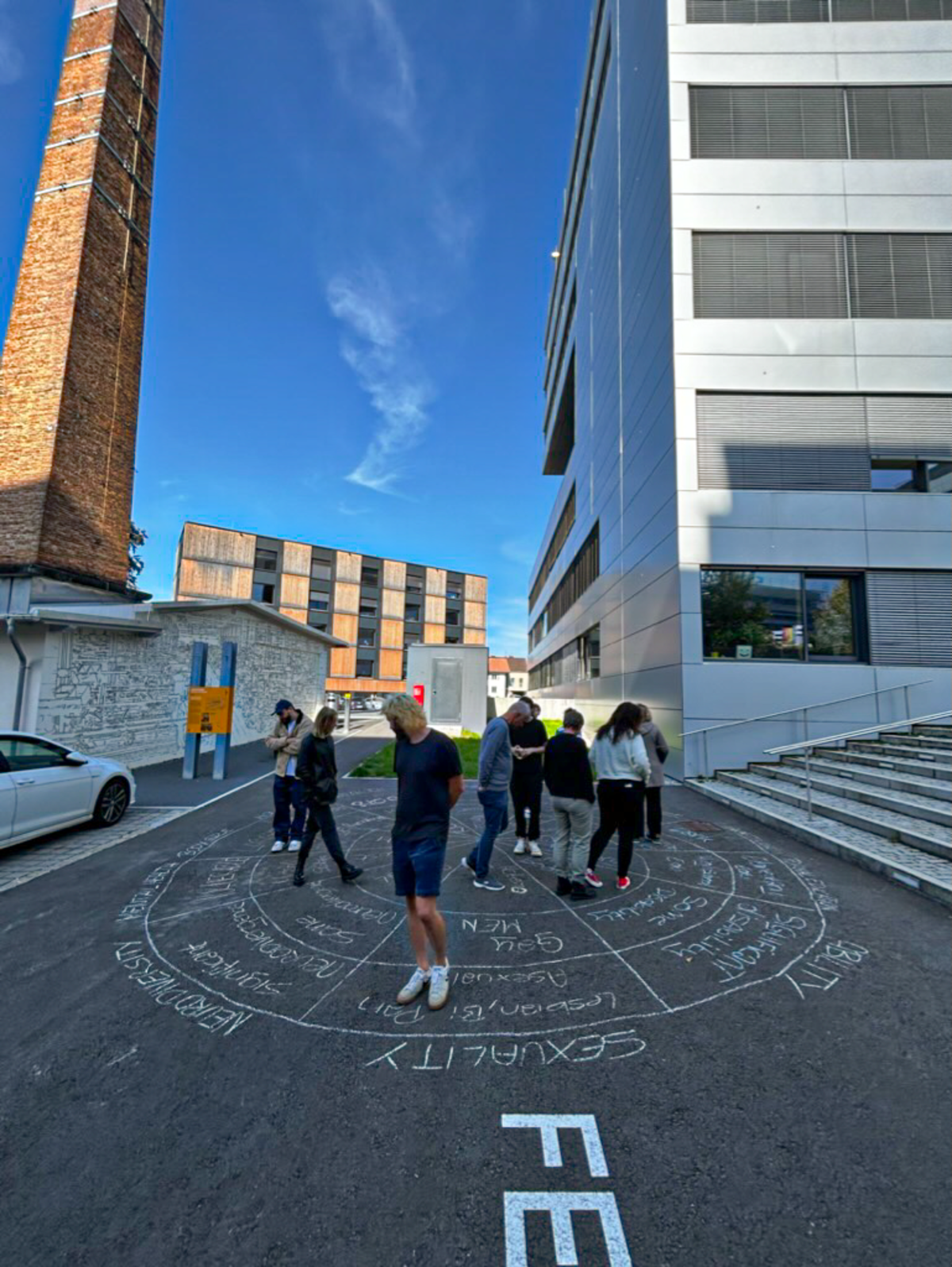
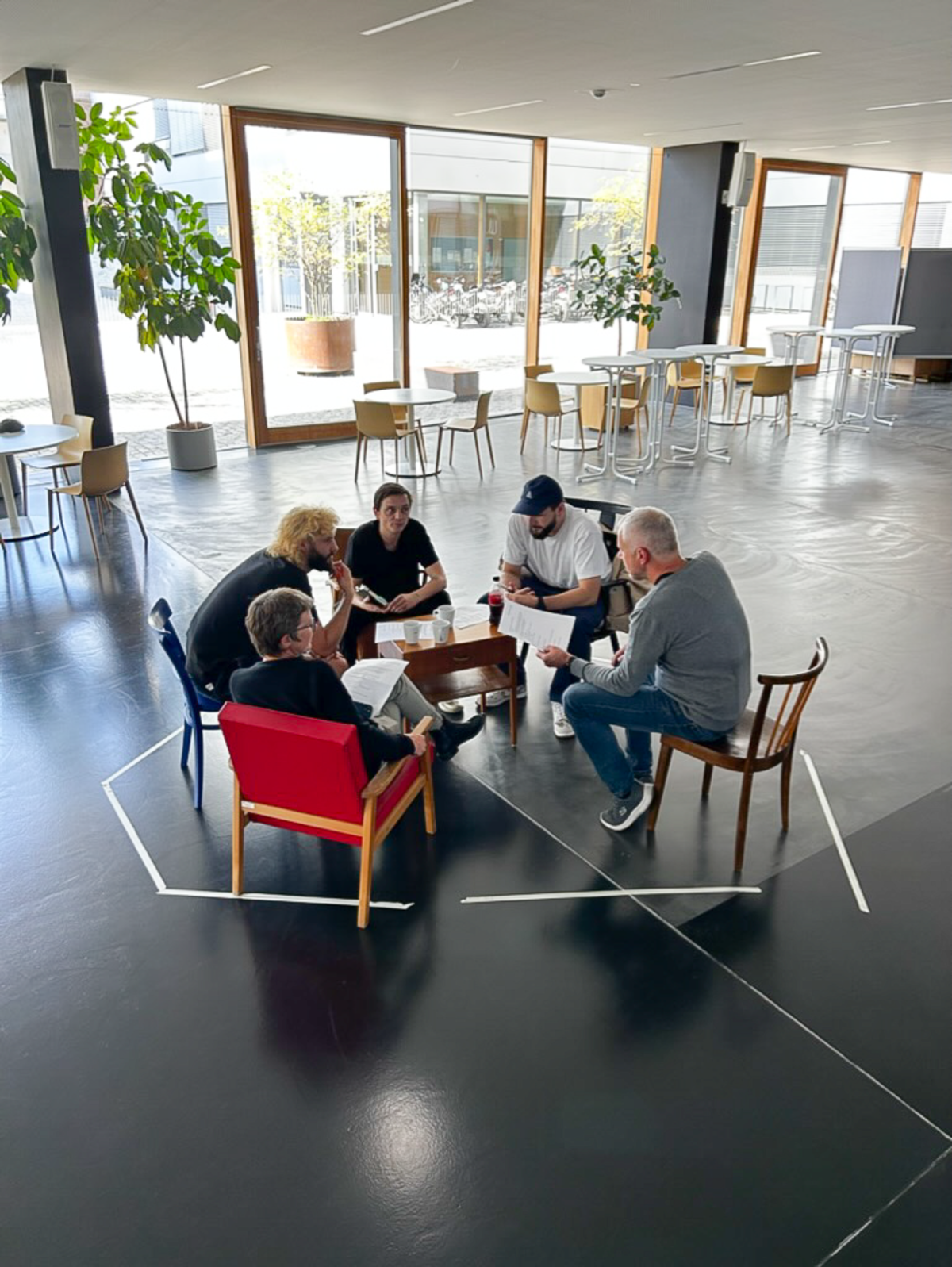
Public space and power
As a prelude to the course "Intercultural Design" in the master's degree programme, the students ventured into an innovative approach to the appropriation of public spaces.
The afternoon began with the introduction of the 'Wheel of Power', which visibly occupied a portion of public space in the courtyard of the Vorarlberg University of Applied Sciences. In order to first engage in self-exploration and begin to understand what intersectional discrimination can mean, both instructors and students positioned themselves within the Wheel of Power. This marked the starting point for a shared reflection on personal notions of power in various intercultural contexts and within public space.
Discussion and reflection
By reading literature together on the topic of intersectional discrimination and the associated individual perception of public space in specific cultural contexts, it was also possible to heighten awareness of power structures in an intercultural context. The joint discussion on the topic took place in public space, which the students took symbolically - because who owns the public space?
This action emphasizes the role of public space as a platform for reflection on cultural diversity and thus not only promotes the development of intercultural skills, but also underlines the relevance of diversity and inclusion in the design process.
Campus V guidance system
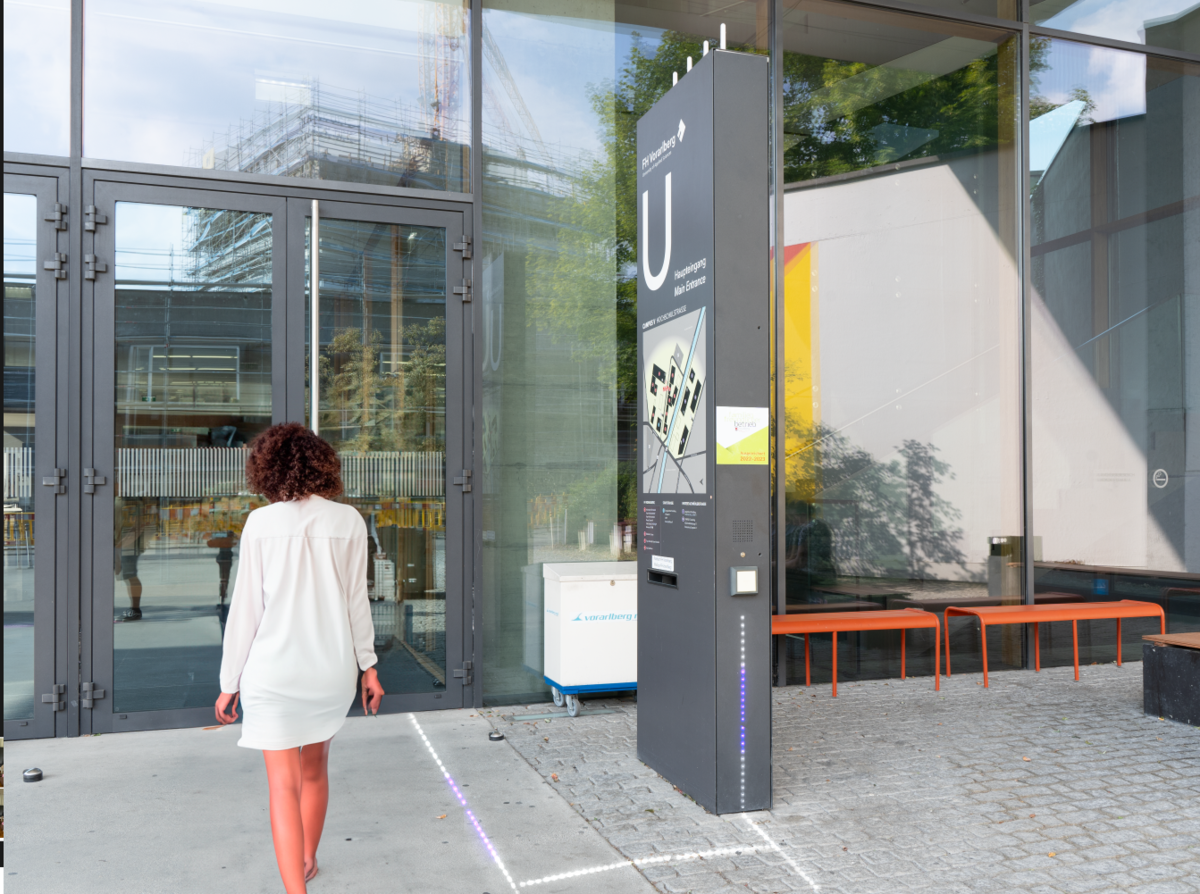


Campus Navigation Reloaded: The revolution of the guidance system through creative research
In "Research Seminar 2", students passionately dedicated themselves to redesigning the signage system for the Vorarlberg University of Applied Sciences and Campus V. The focus was on researching potential options, evaluating the orientation and behavioral patterns of campus users and developing sustainable solutions and orientation concepts.
Different research methods, from psychogeographic approaches to qualitative interviews, were used to create a precise and user-centered basis for the guidance system redesign. This methodological diversity provided a comprehensive insight into the navigation and orientation needs of students, lecturers and visitors.Pioneering innovation: How students are designing the guidance system of the future
In several groups, the students explored different areas with different test subjects, with over 80 people taking part in the individual trail explorations.
The wide range of observation rooms, evaluation days and test subjects covered a variety of usage scenarios. After developing user-centered solutions, the sustainable and innovative concepts came to life through design fiction. The students used successful storytelling and prototyping to illustrate visionary ideas for a future guidance system.
From idea to reality: the visionary redesign of the FH Vorarlberg campus
This comprehensive project not only underlines the Master's students' academic commitment to research, but also their ability to tackle real-world challenges in a design context. It serves as an outstanding example of how FH Vorarlberg actively involves its students in the design process in order to develop innovative solutions for a shared campus.